Maria Kassab apologizes as soon as we enter her office. She just moved in and she didn’t have the time to fix it properly, an old Lebanese apartment with tiled floors, high ceilings and beautiful window bays overlooking the Gemmayzeh street below. The first room is bare – she has plans to turn it into an exhibition and workshop space soon – but the artsy magazines, the astronaut’s helmet and a large collage of Sophia Loren immediately give you an insight into Maria’s world.
Shy and softly spoken with a girlish spirit, you wouldn’t guess the visual artist is now in her thirties. Setting up her own office now has meant leaving behind the security – and long hours – of office life to concentrate fully on her own visual art and commercial clients. Her digital and handmade collages blend surrealist fantasy with social realities, juxtaposing images from past and present: a bare-chested man with a panda’s head and a suggestively placed bazooka is titled “Homme Cannon”, for example. Man, nature, music and space are also constant themes, but there’s no real point trying to pin down such an unbridled imagination. “I try to convey in my work a lot of messages, to let the viewer get in touch with the essence,” she says, and every work aims to create a feeling of “hope” against the oppressions of daily life.
This portrait is part of our ongoing collaboration with ZEIT Online who presents a special curation of our pictures on their site.
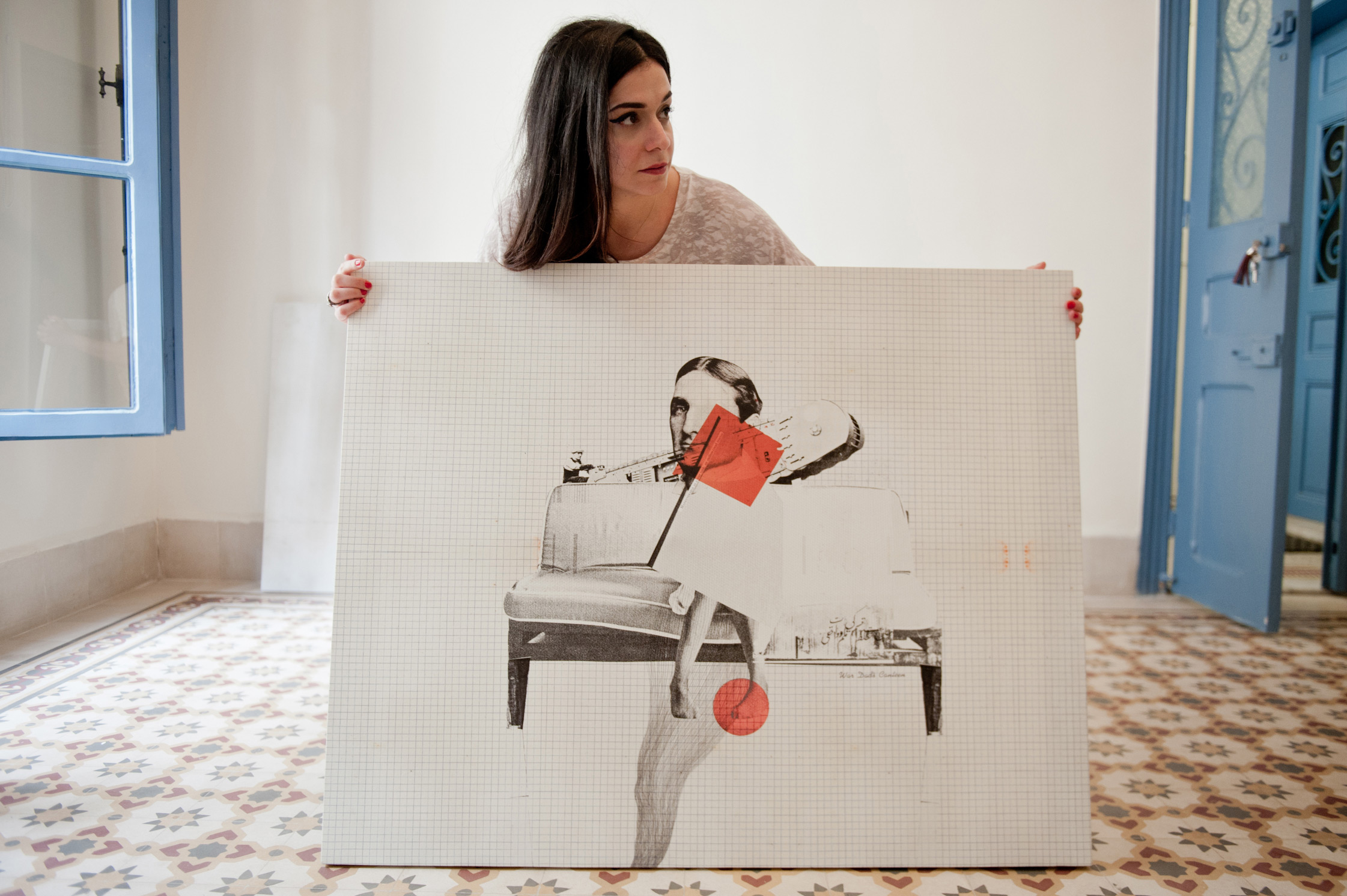
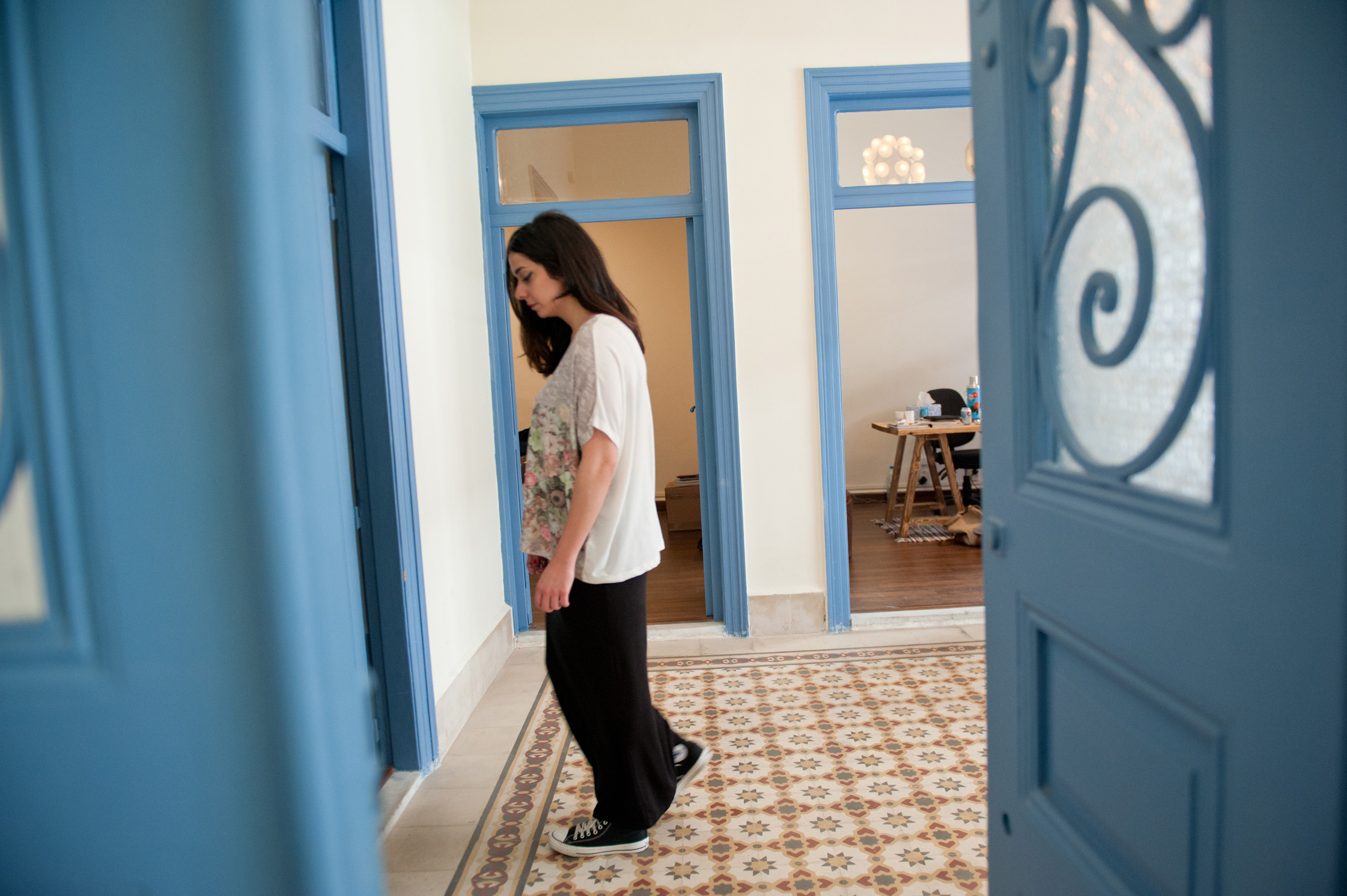
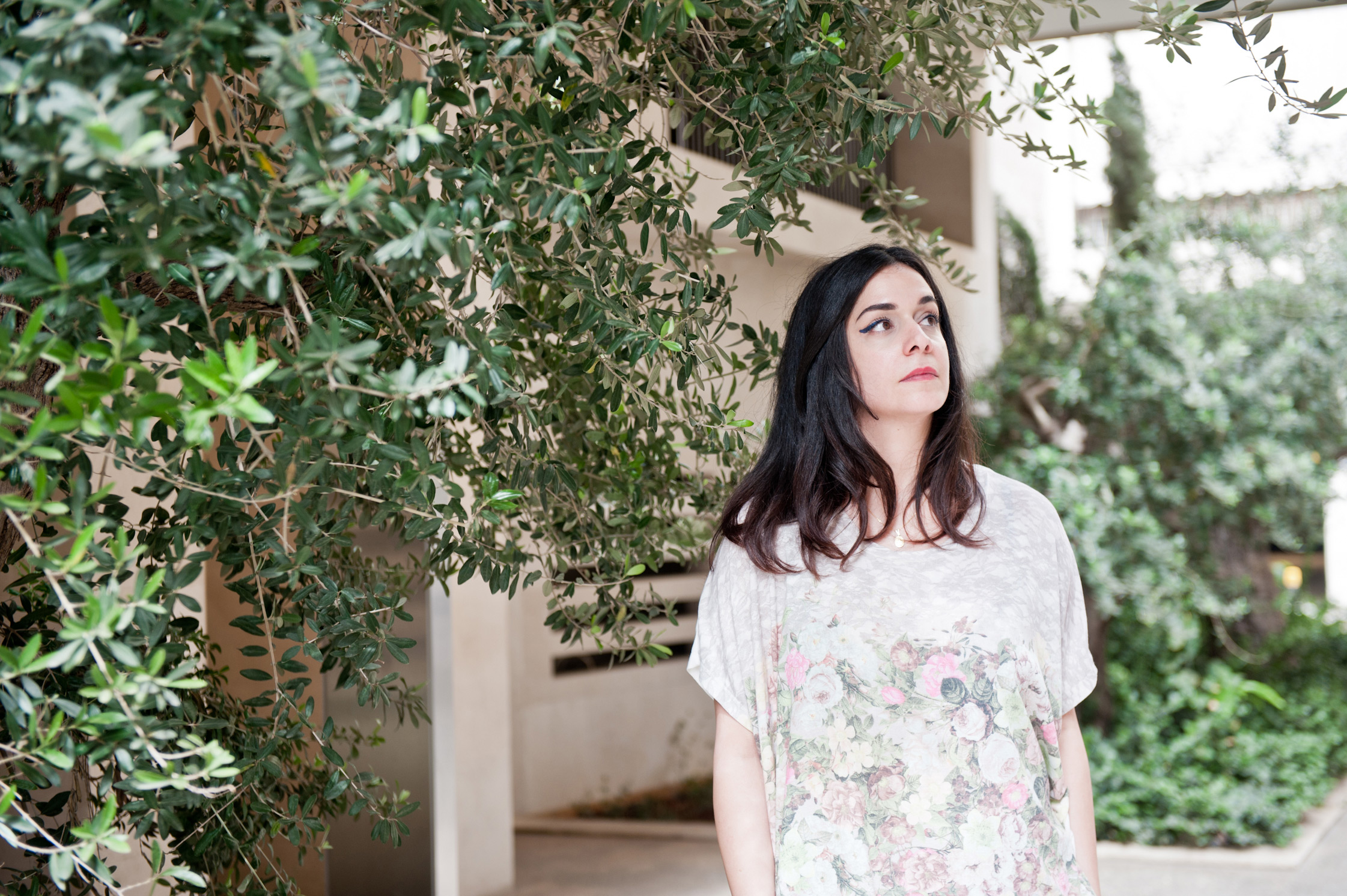
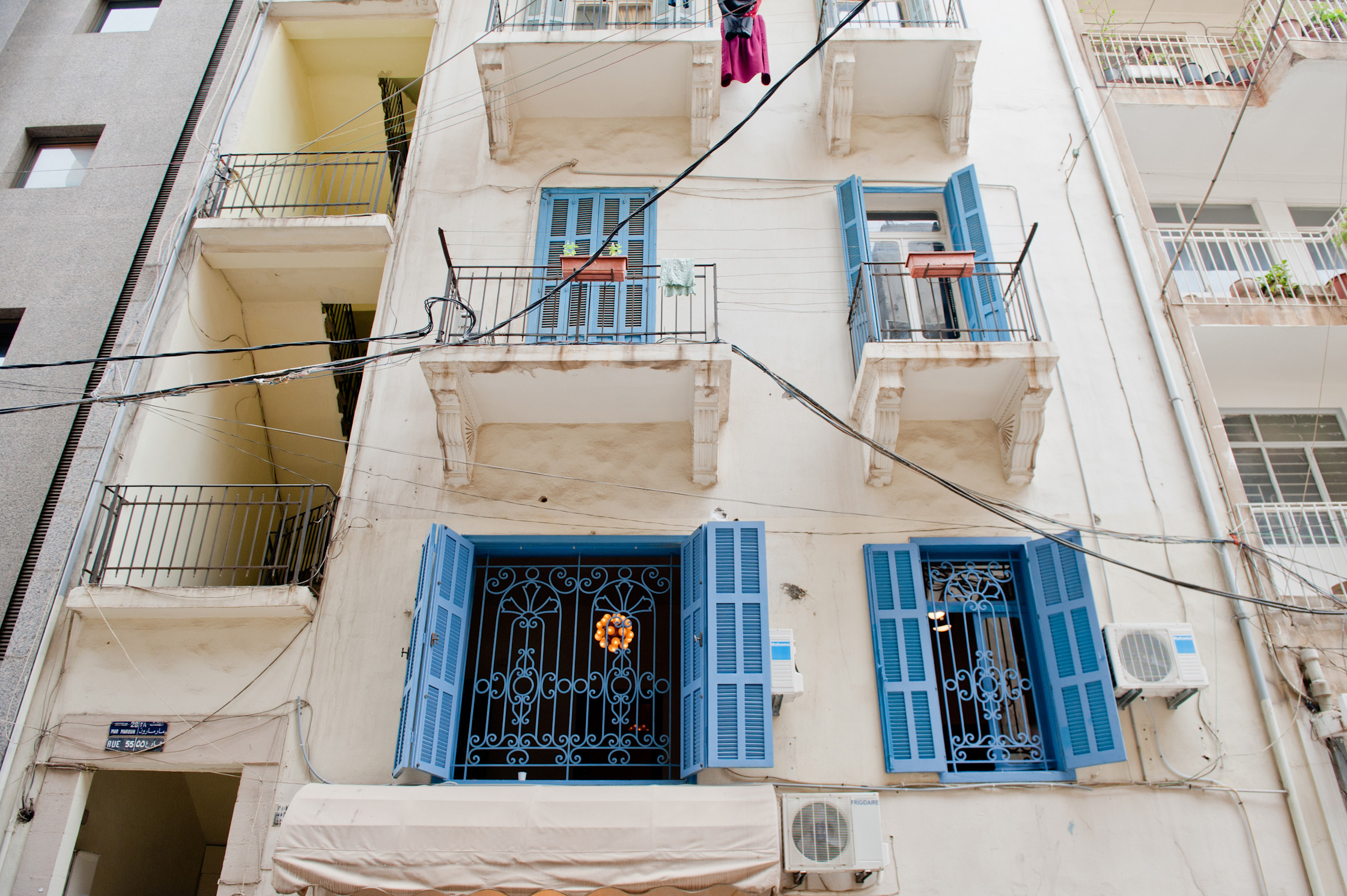
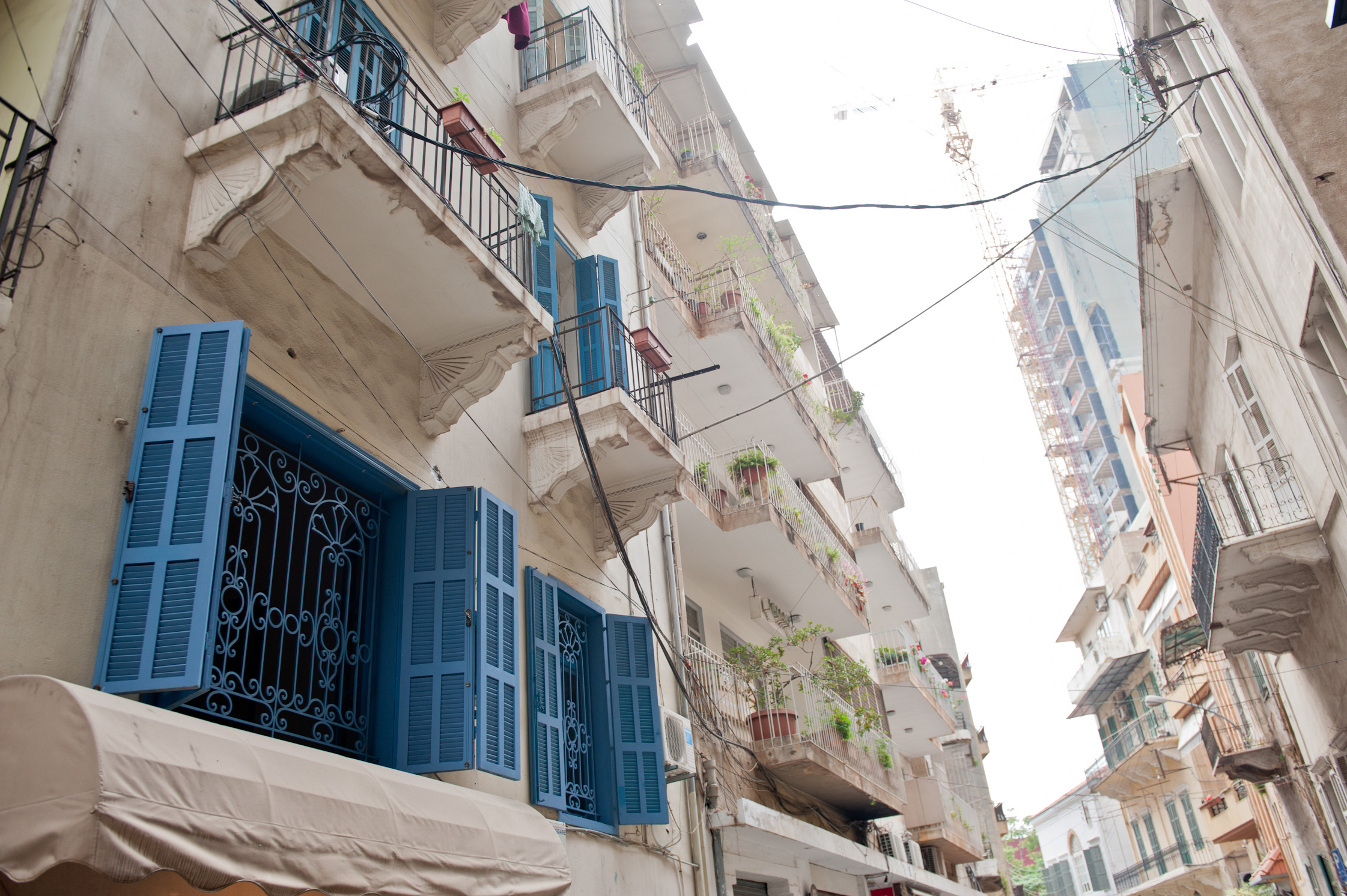
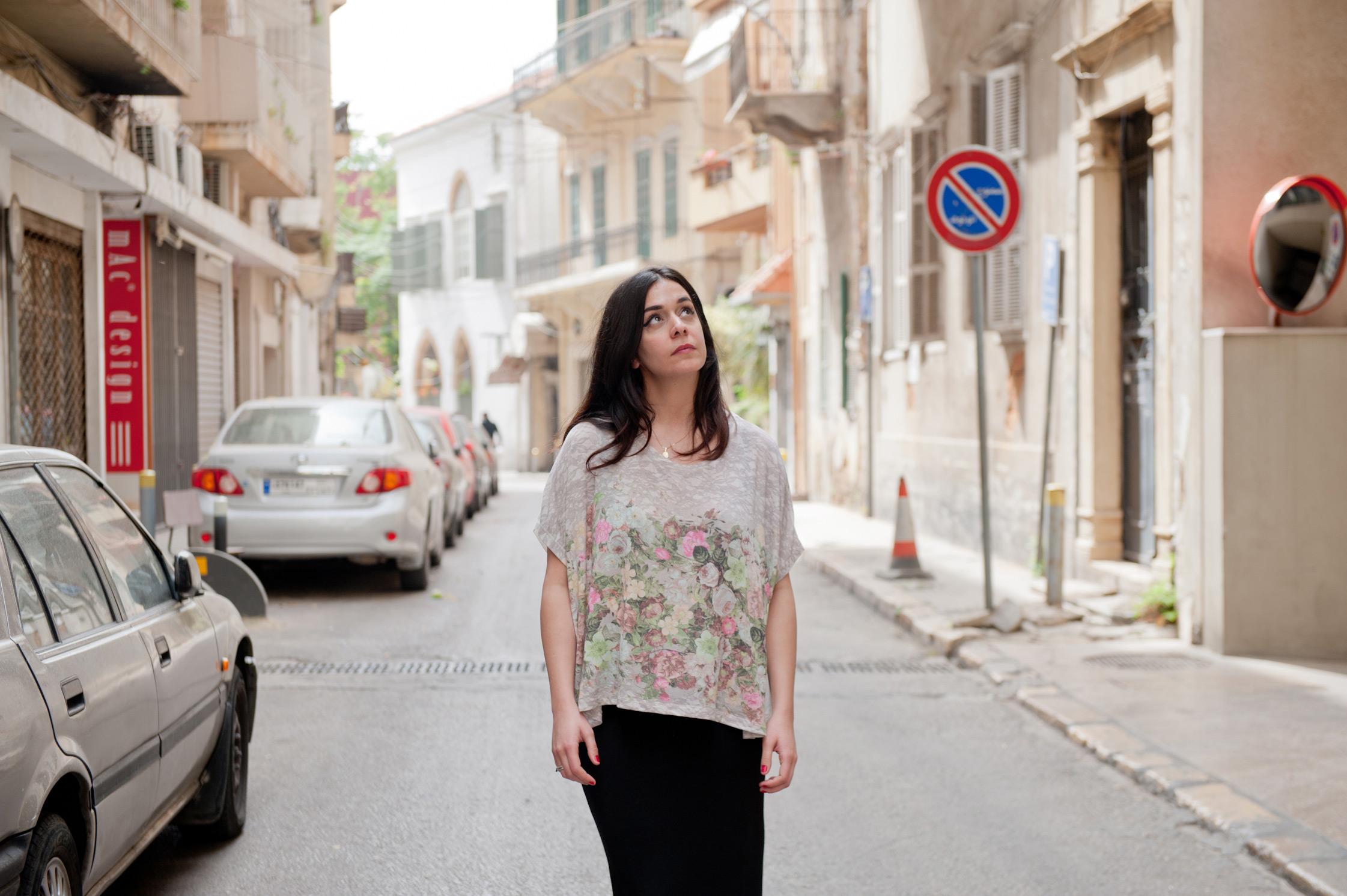
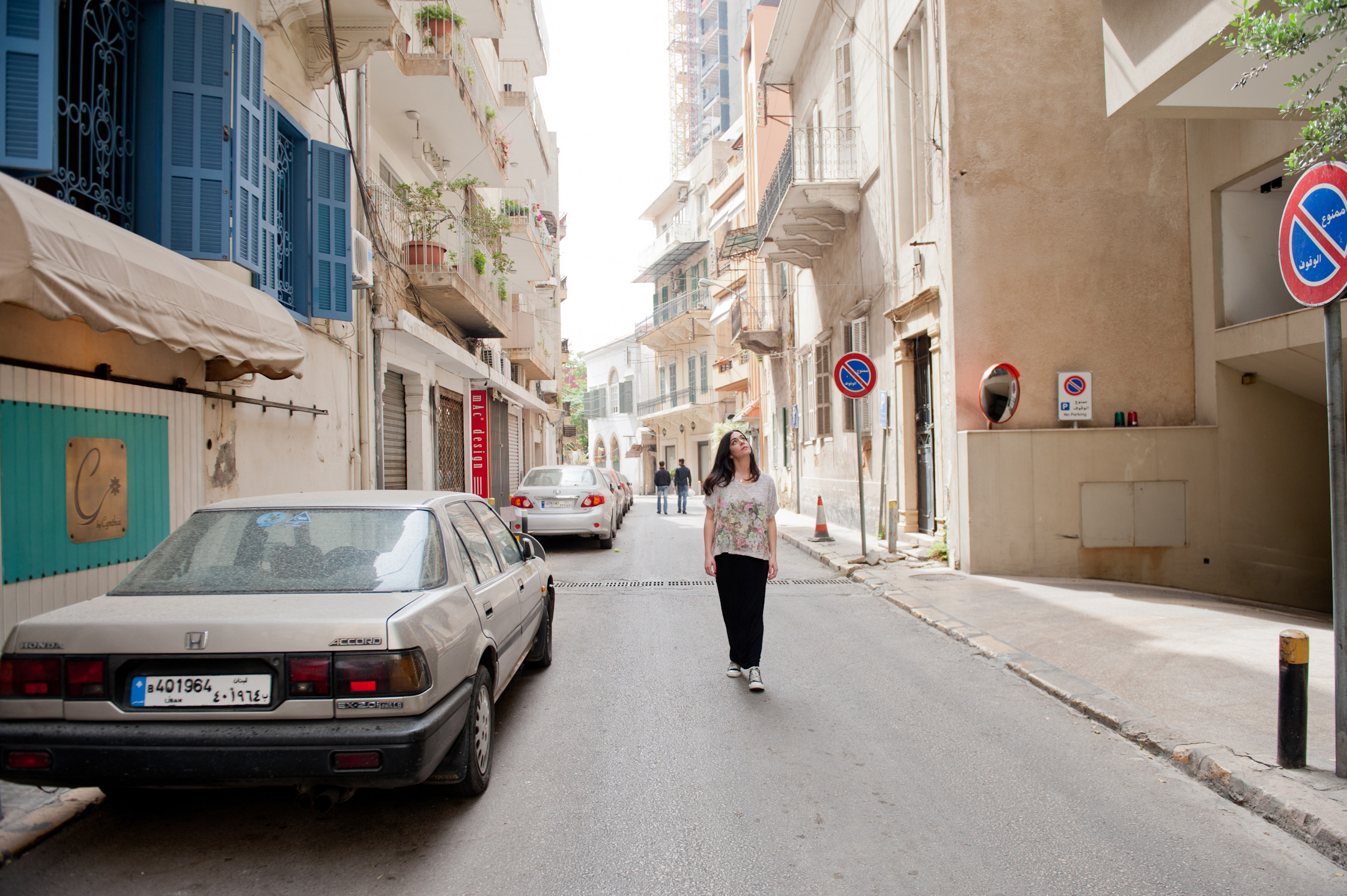
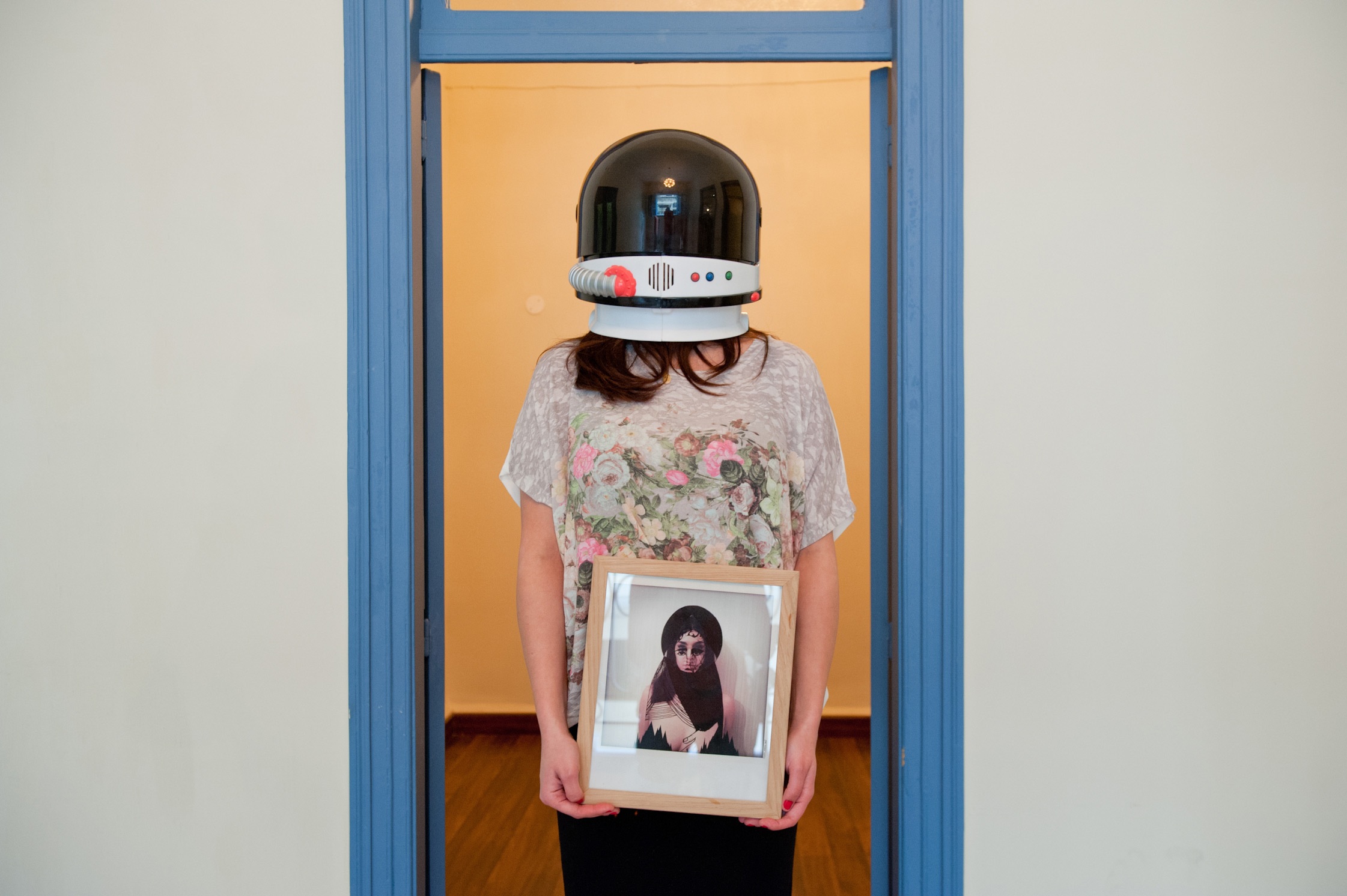
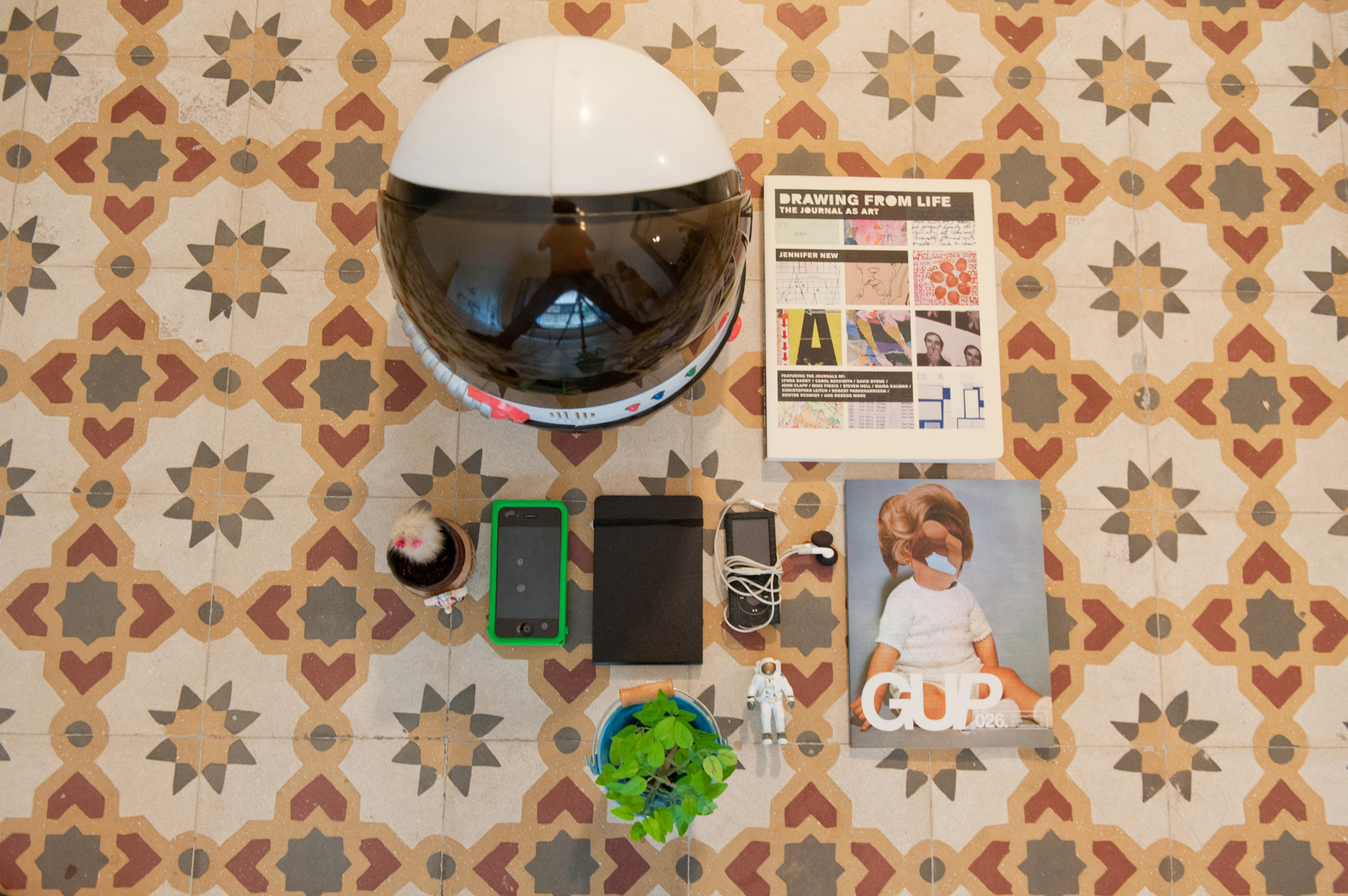
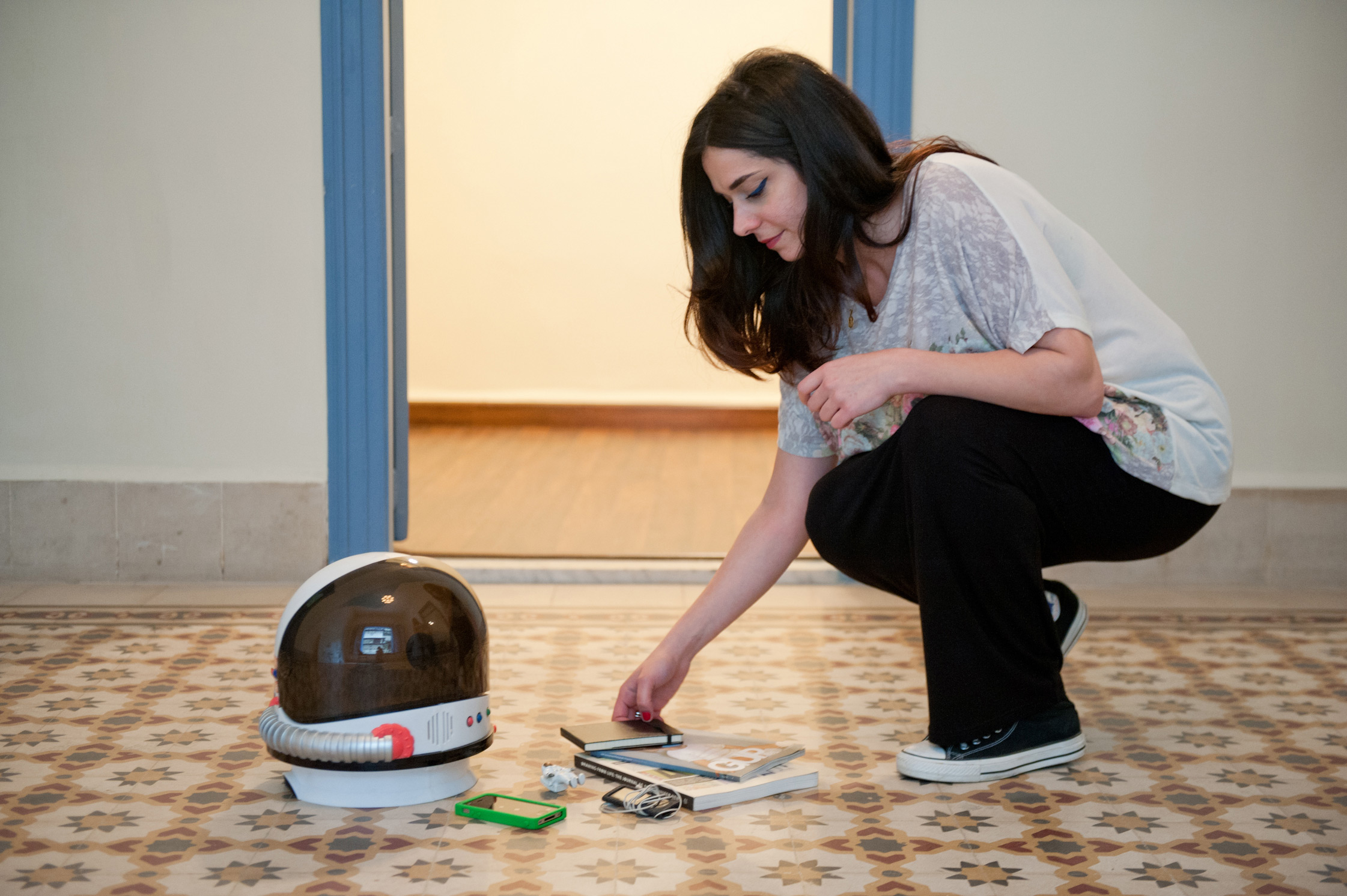
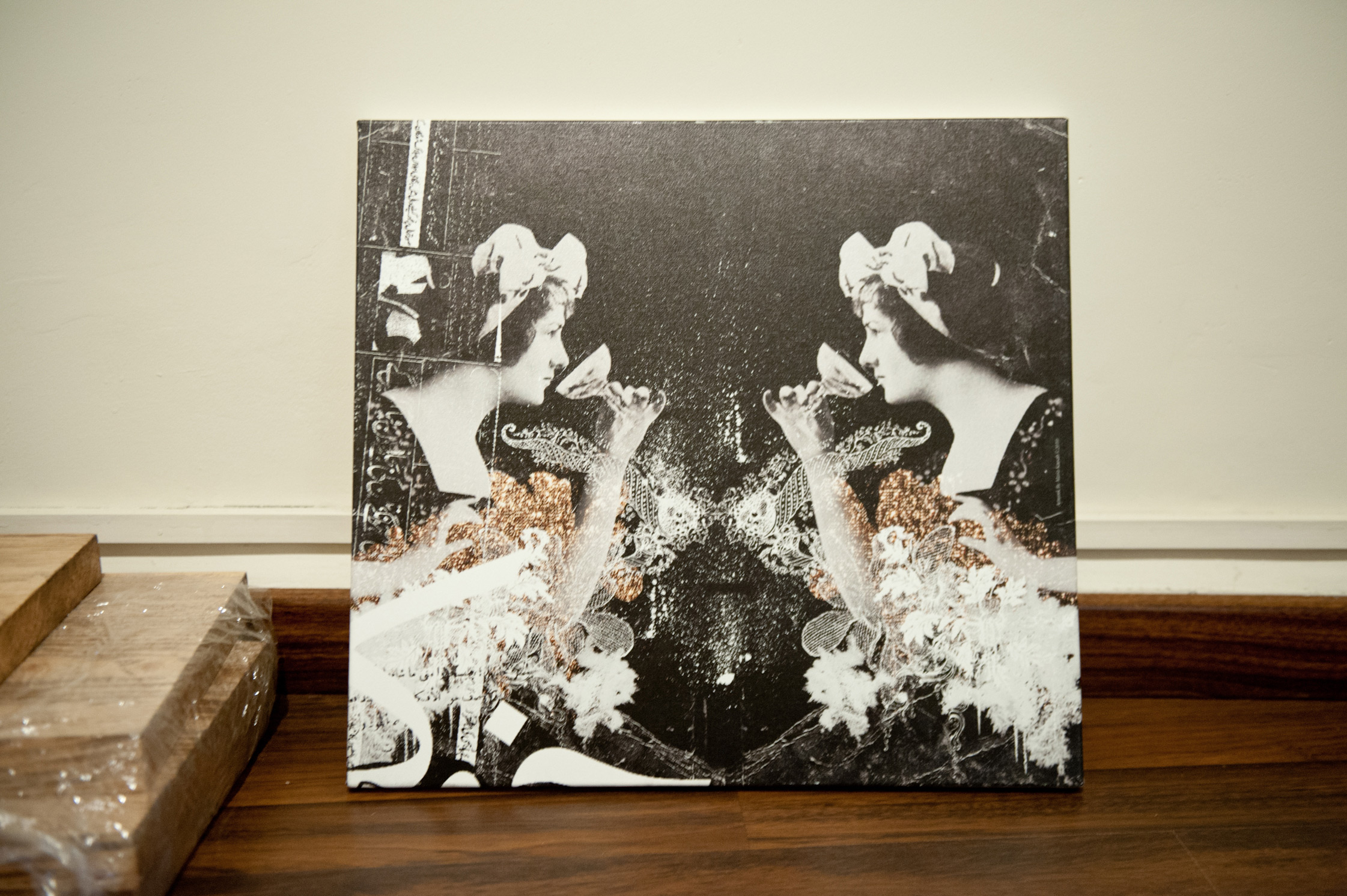
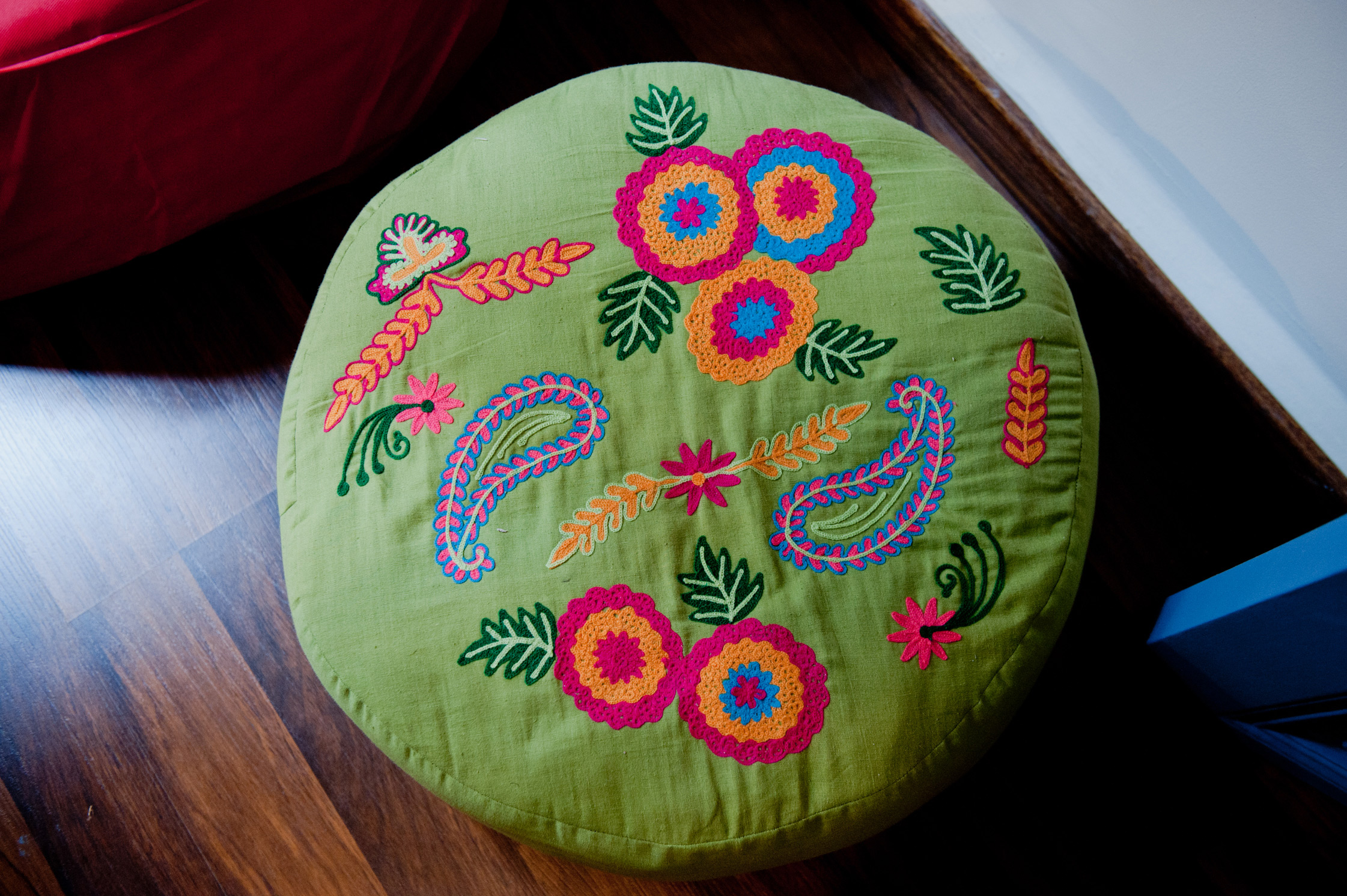
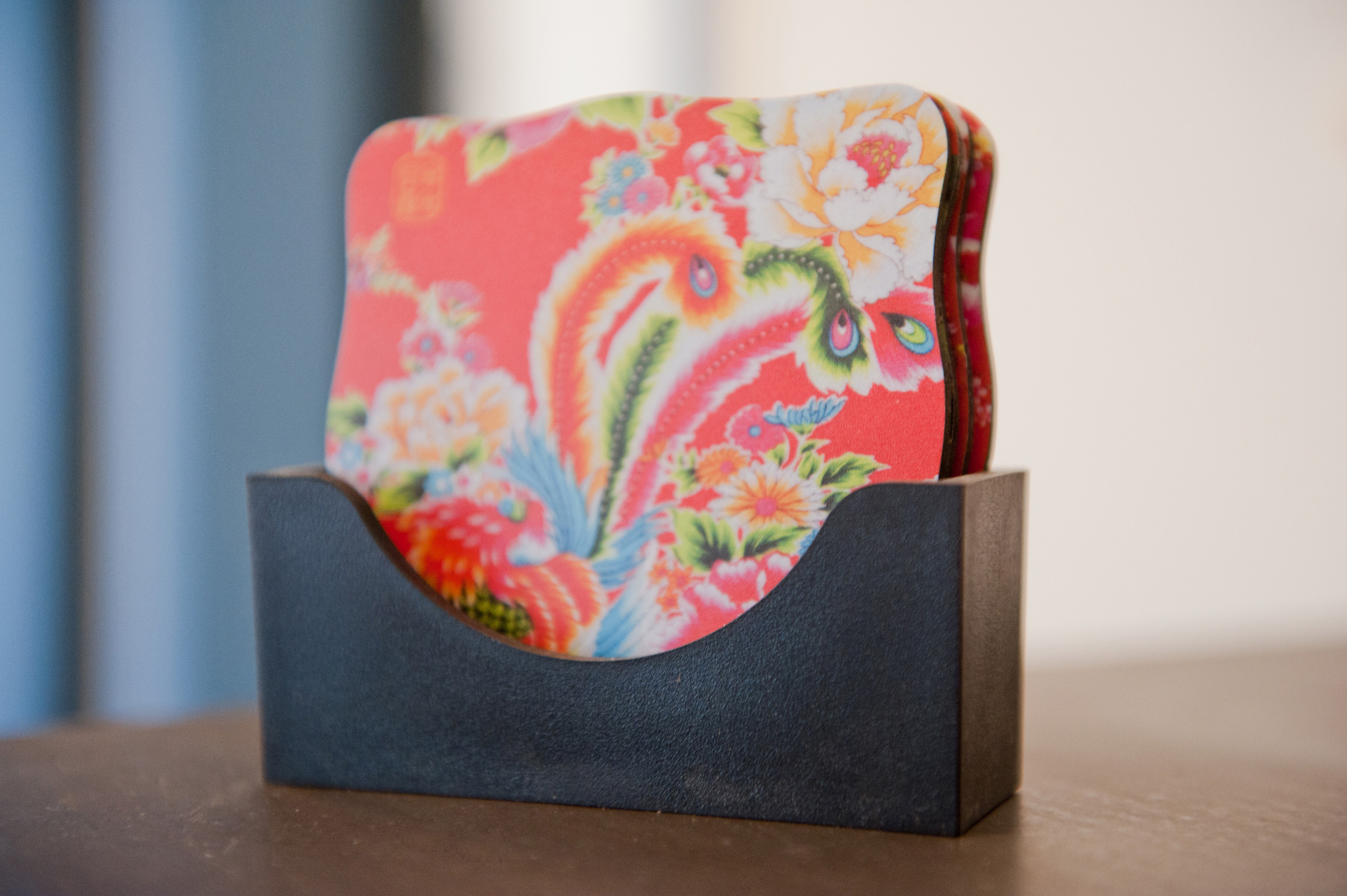
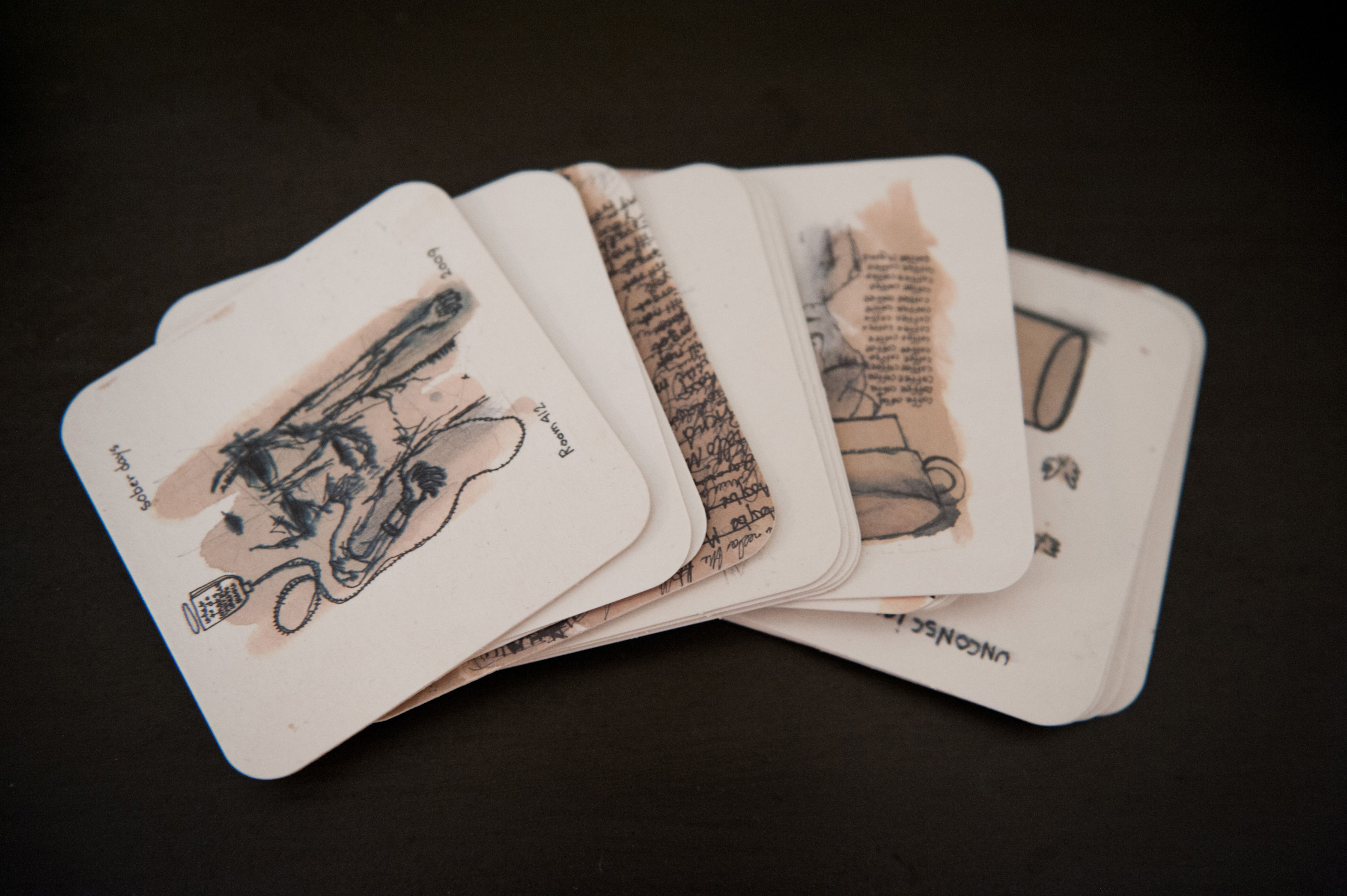
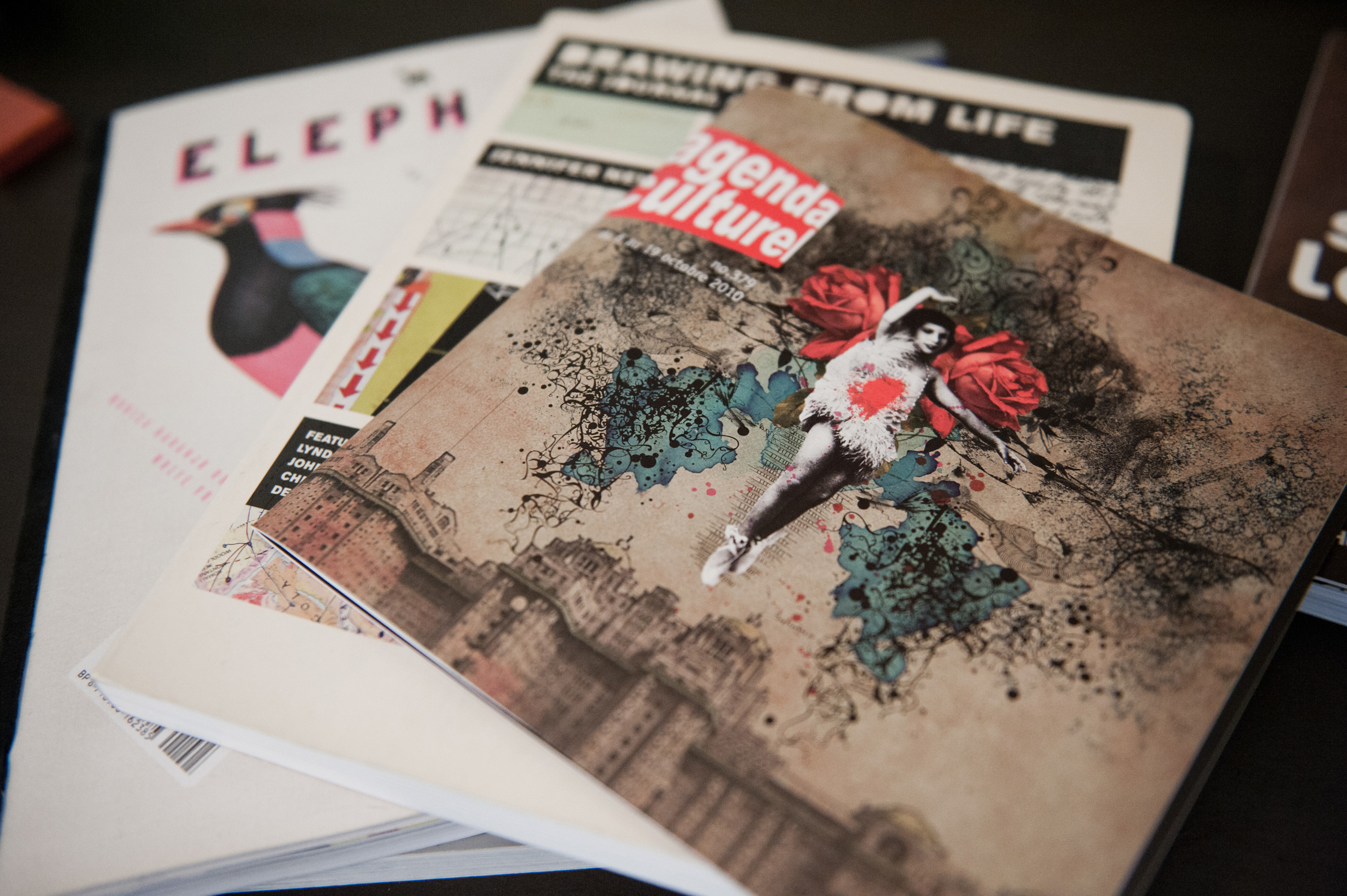
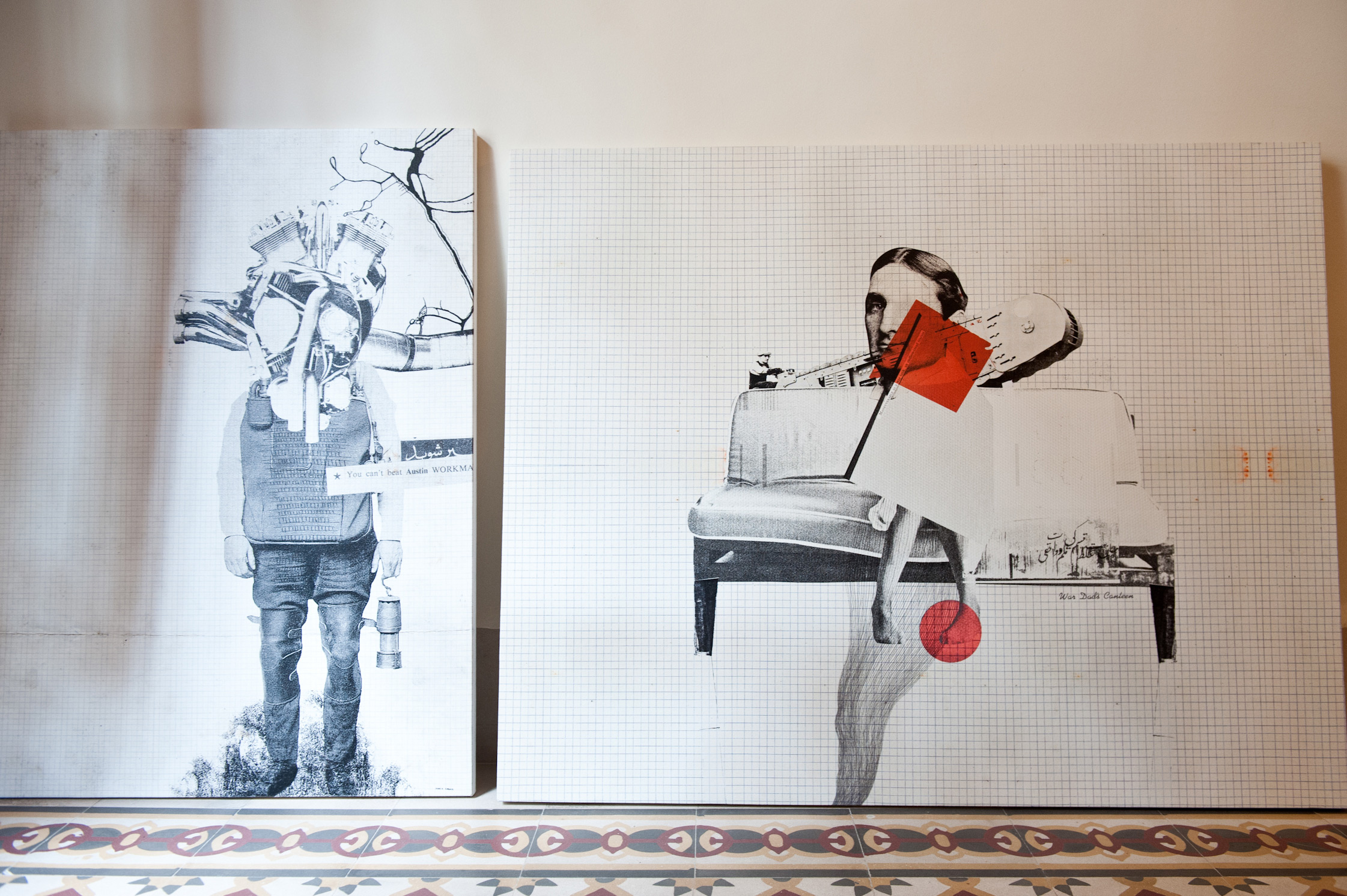
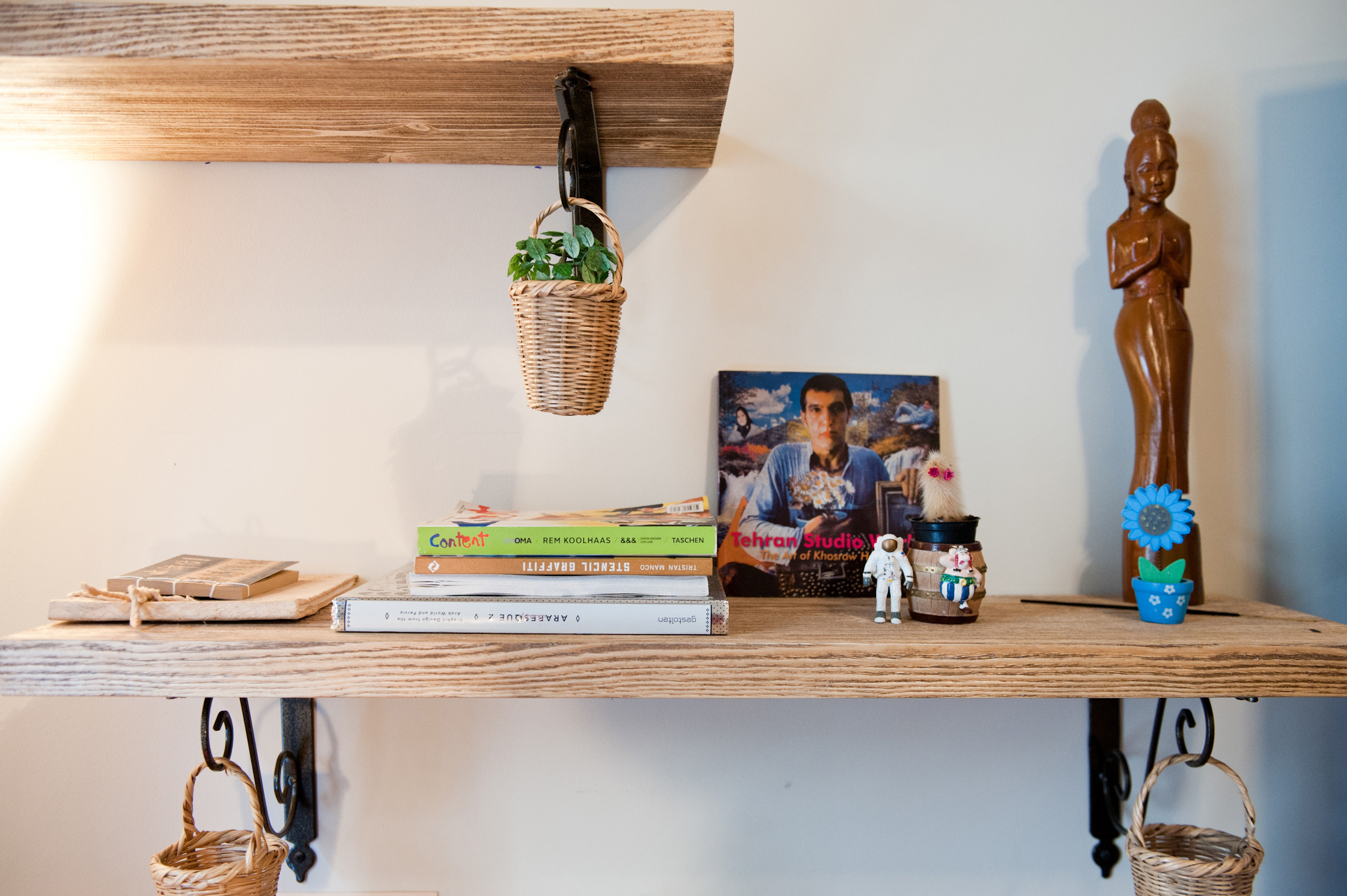
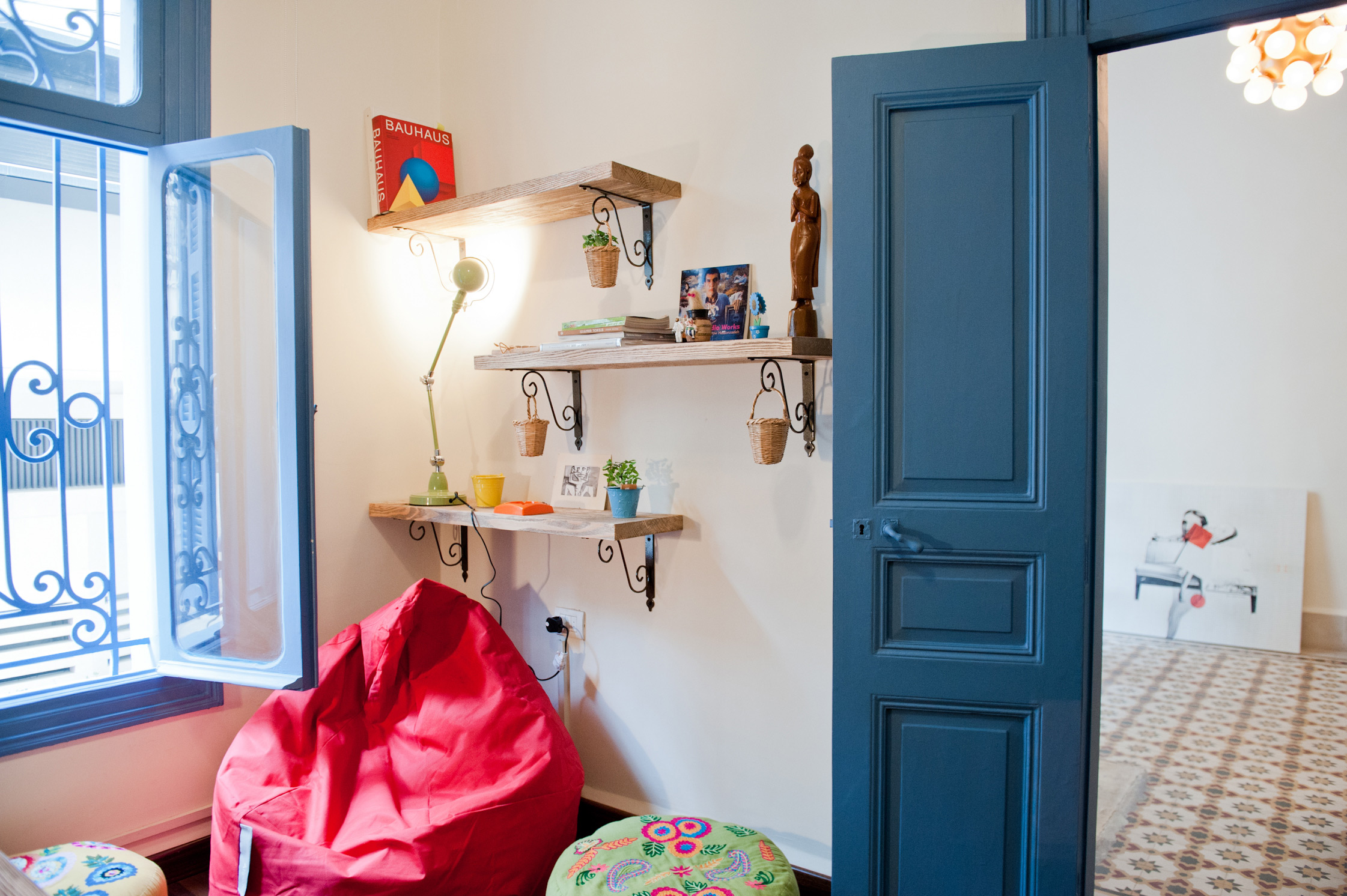
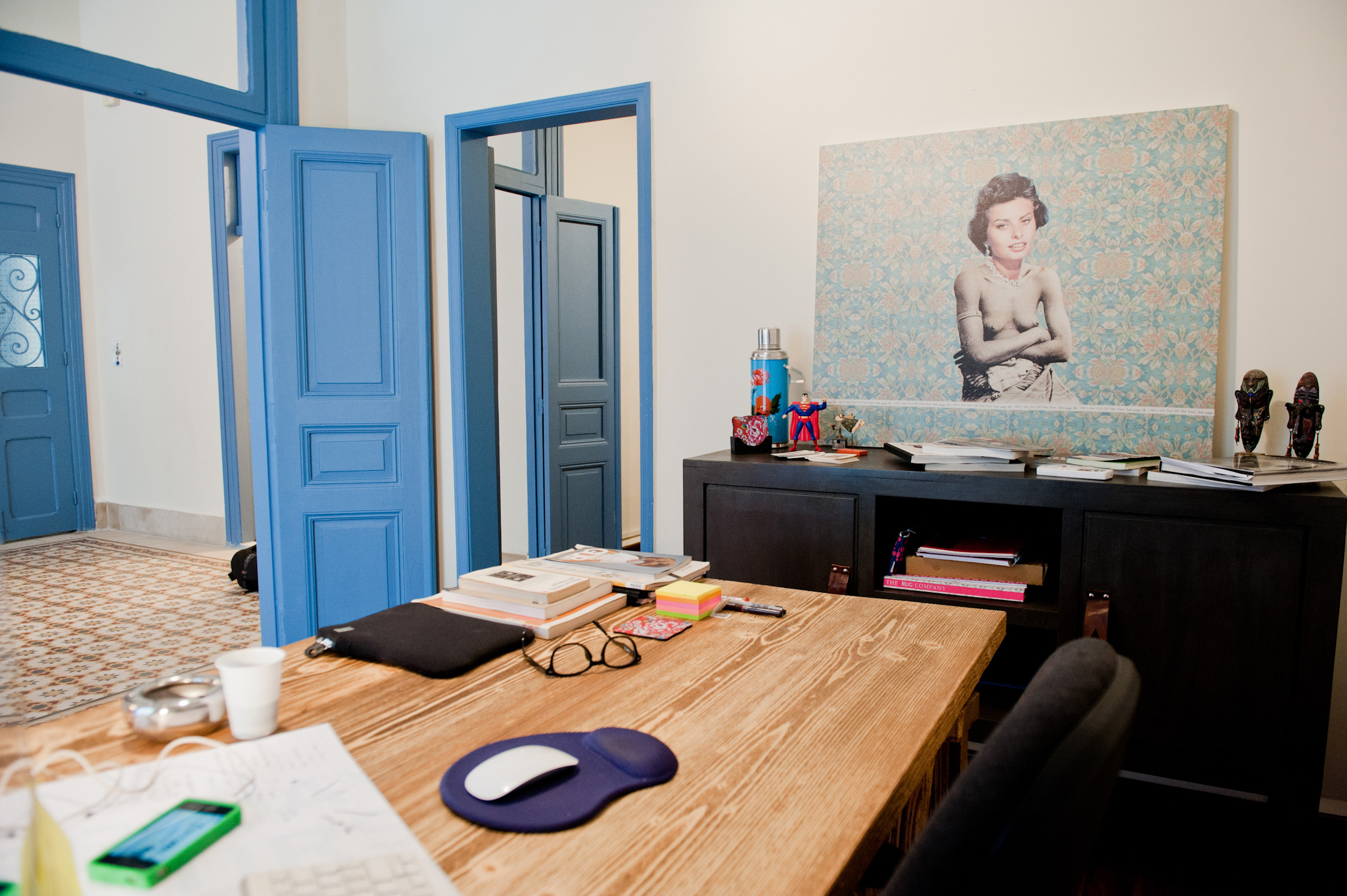
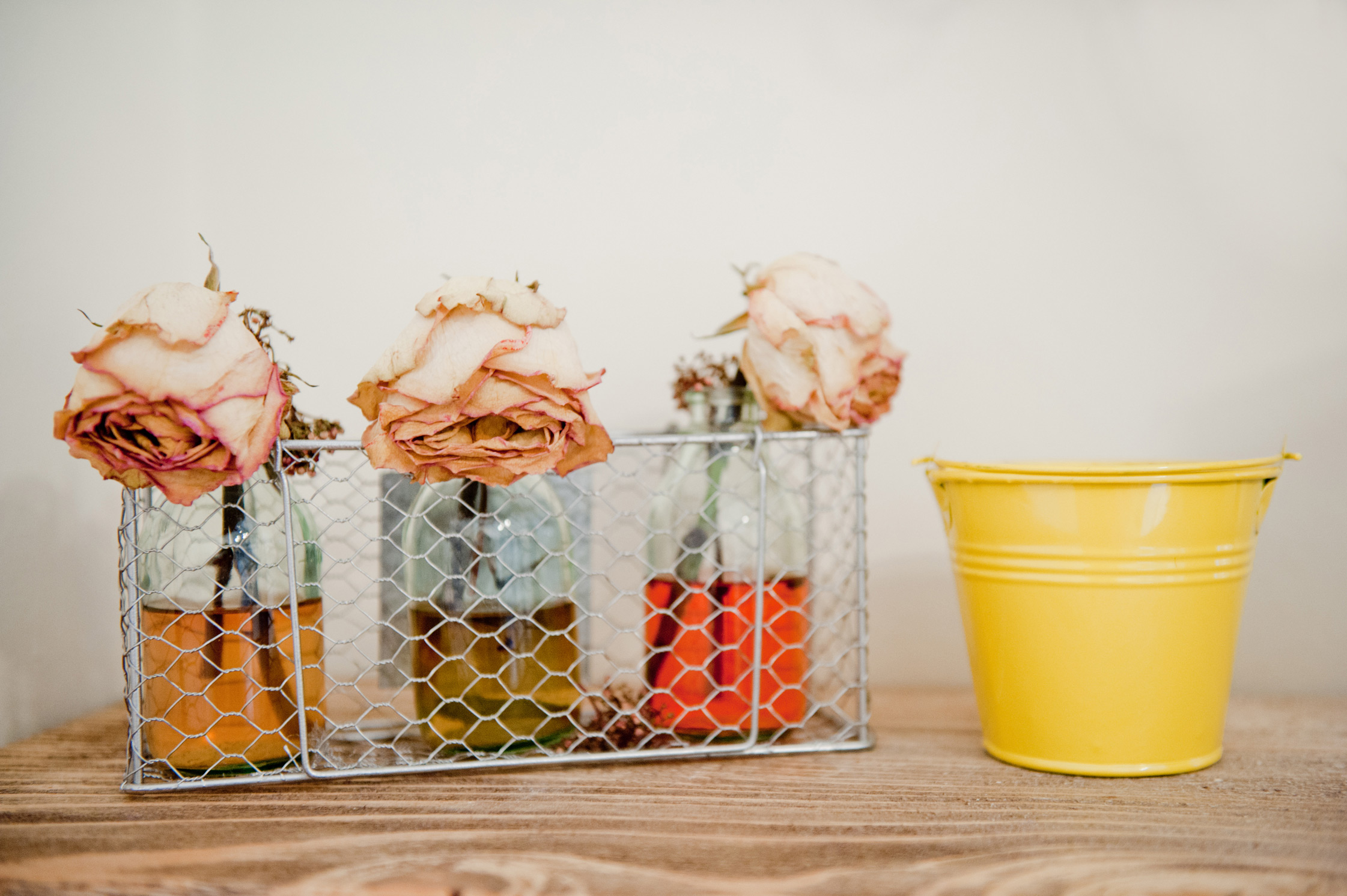
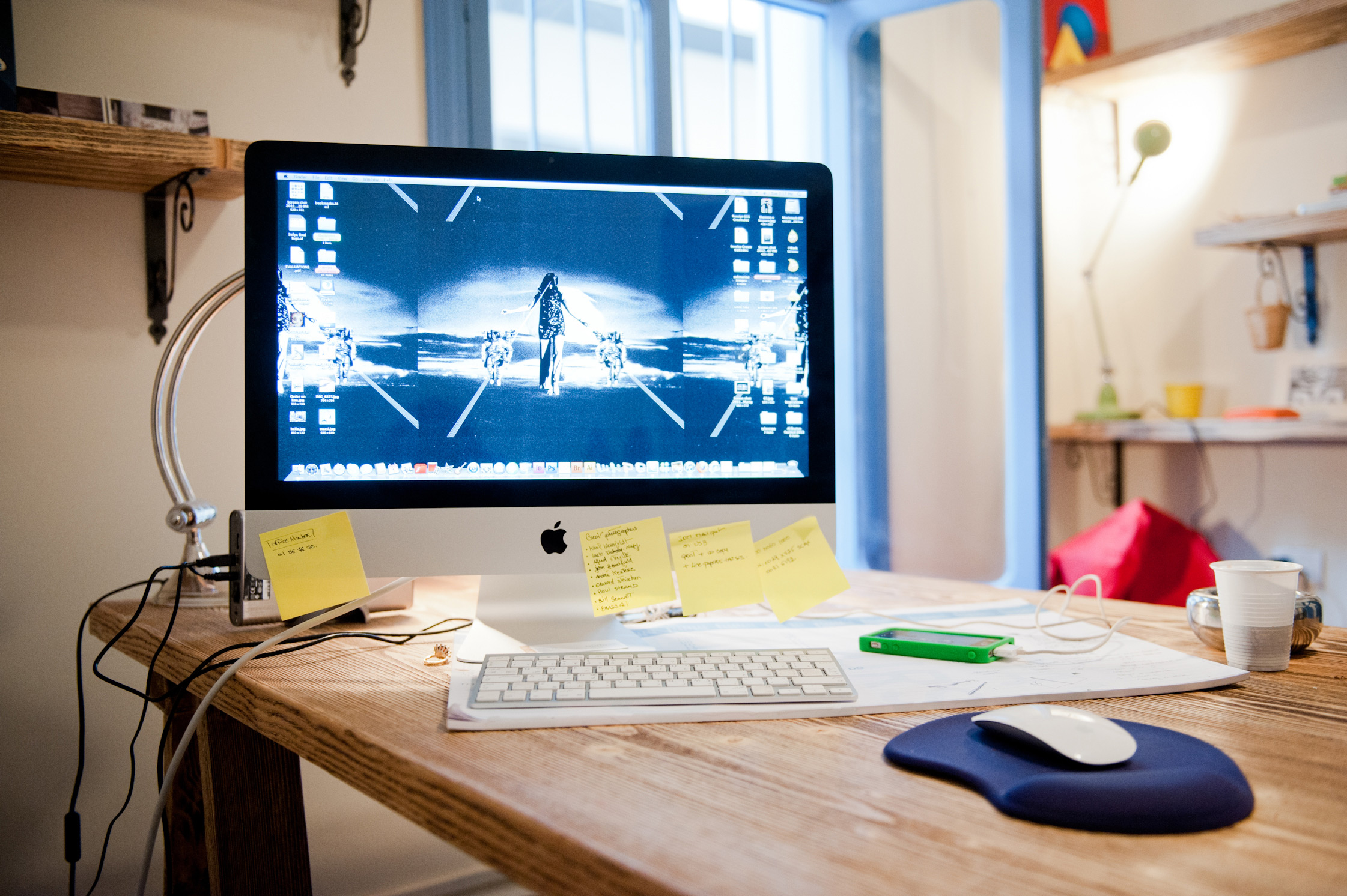
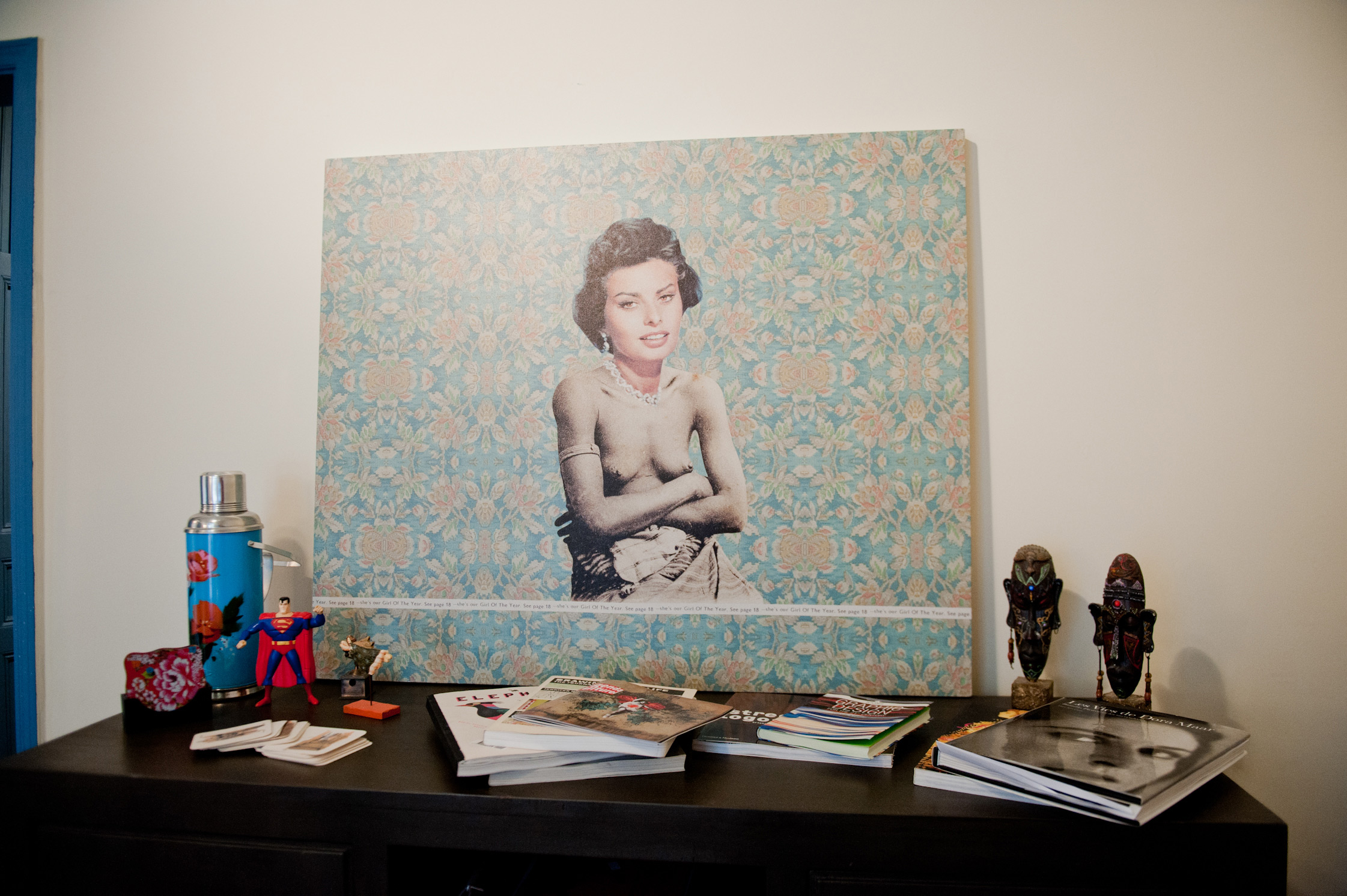
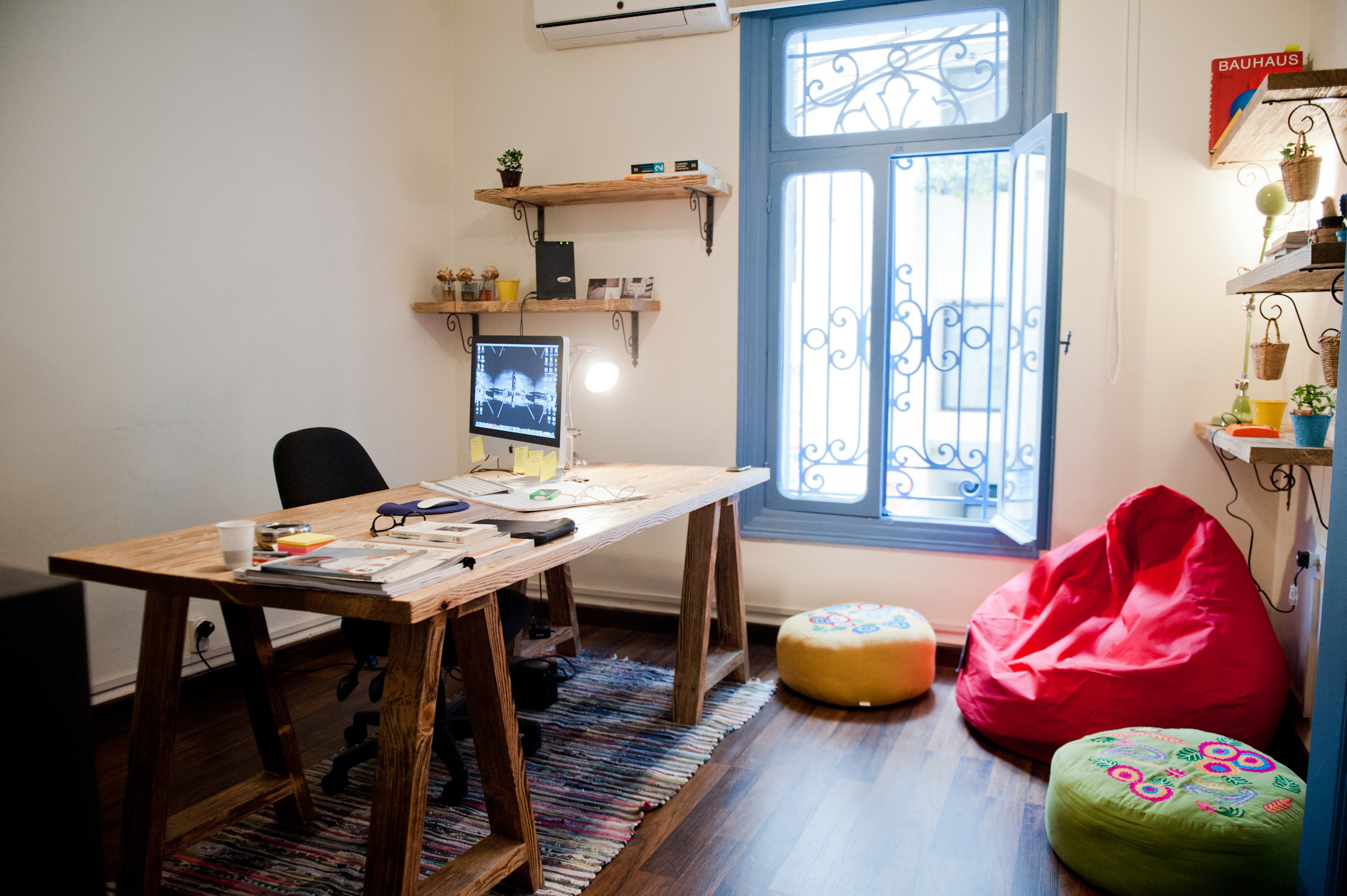
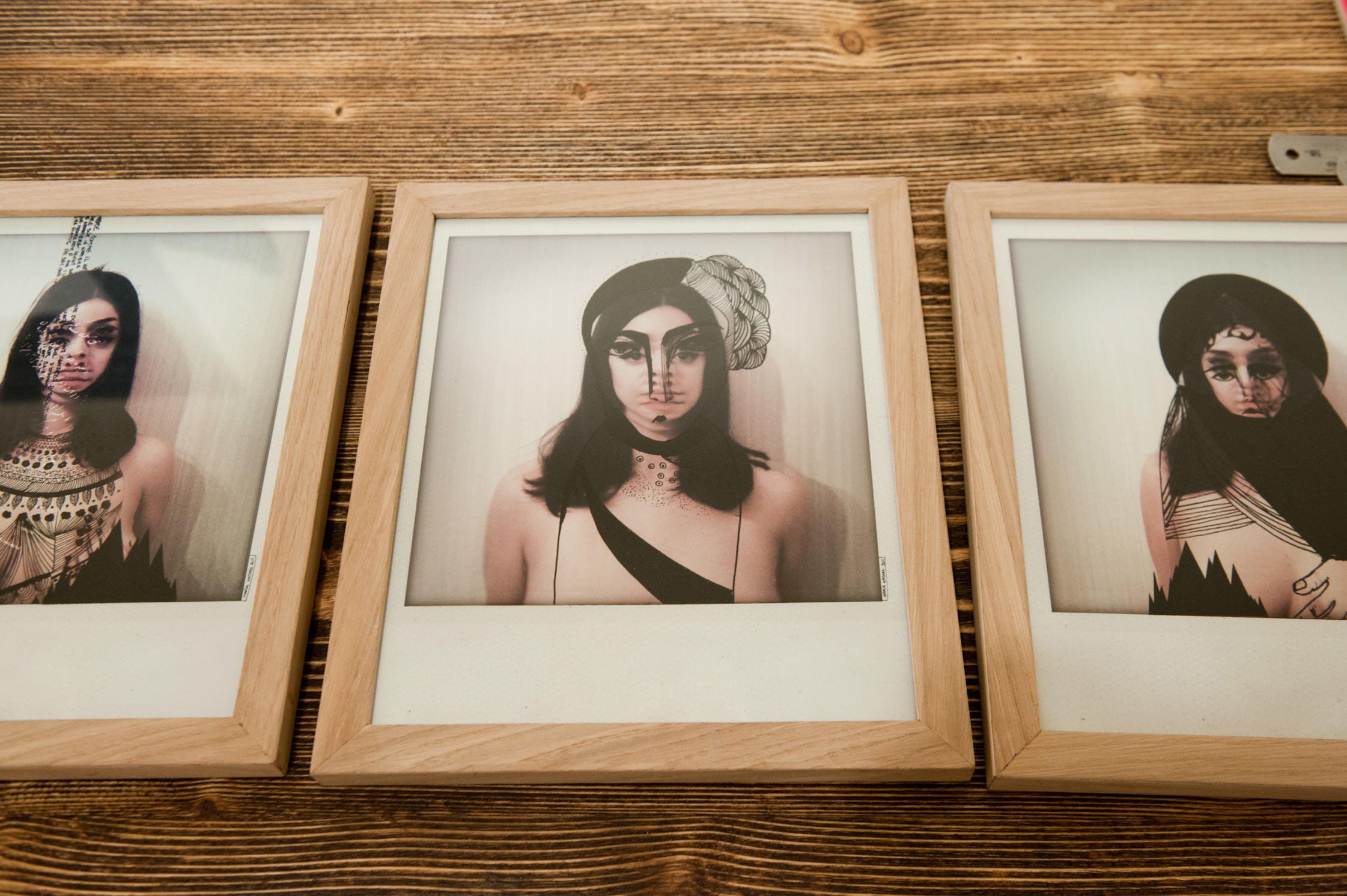
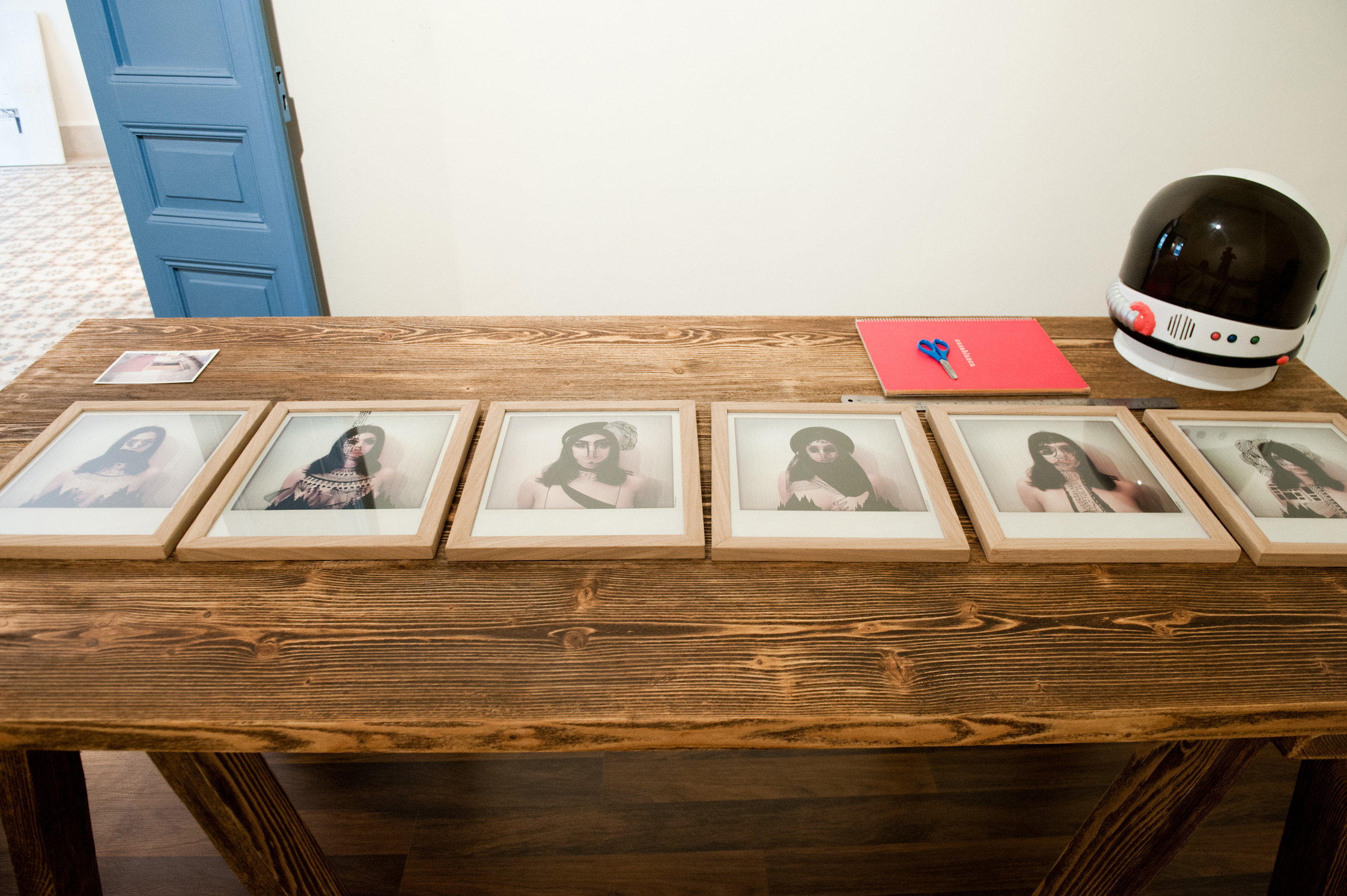
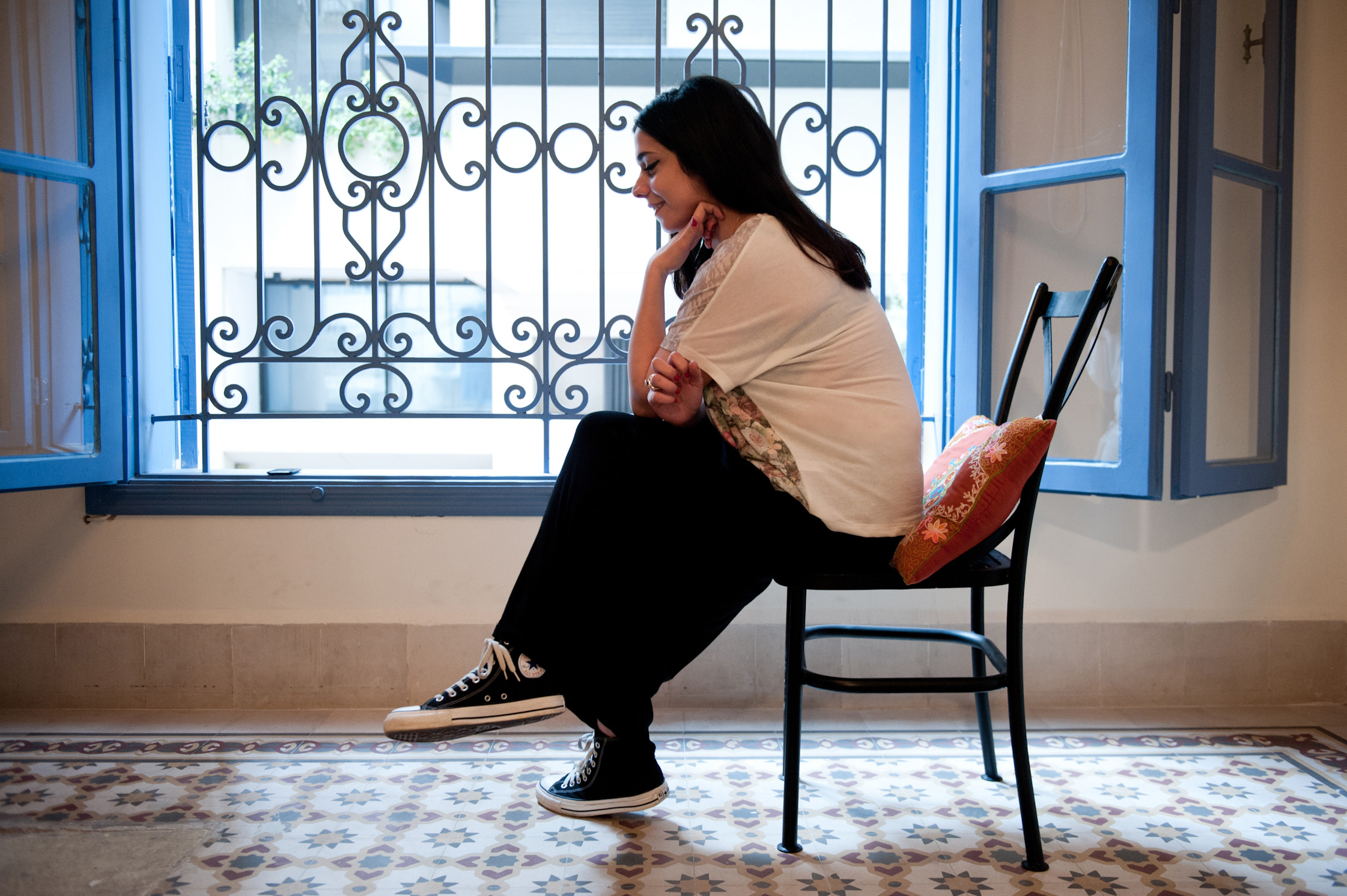
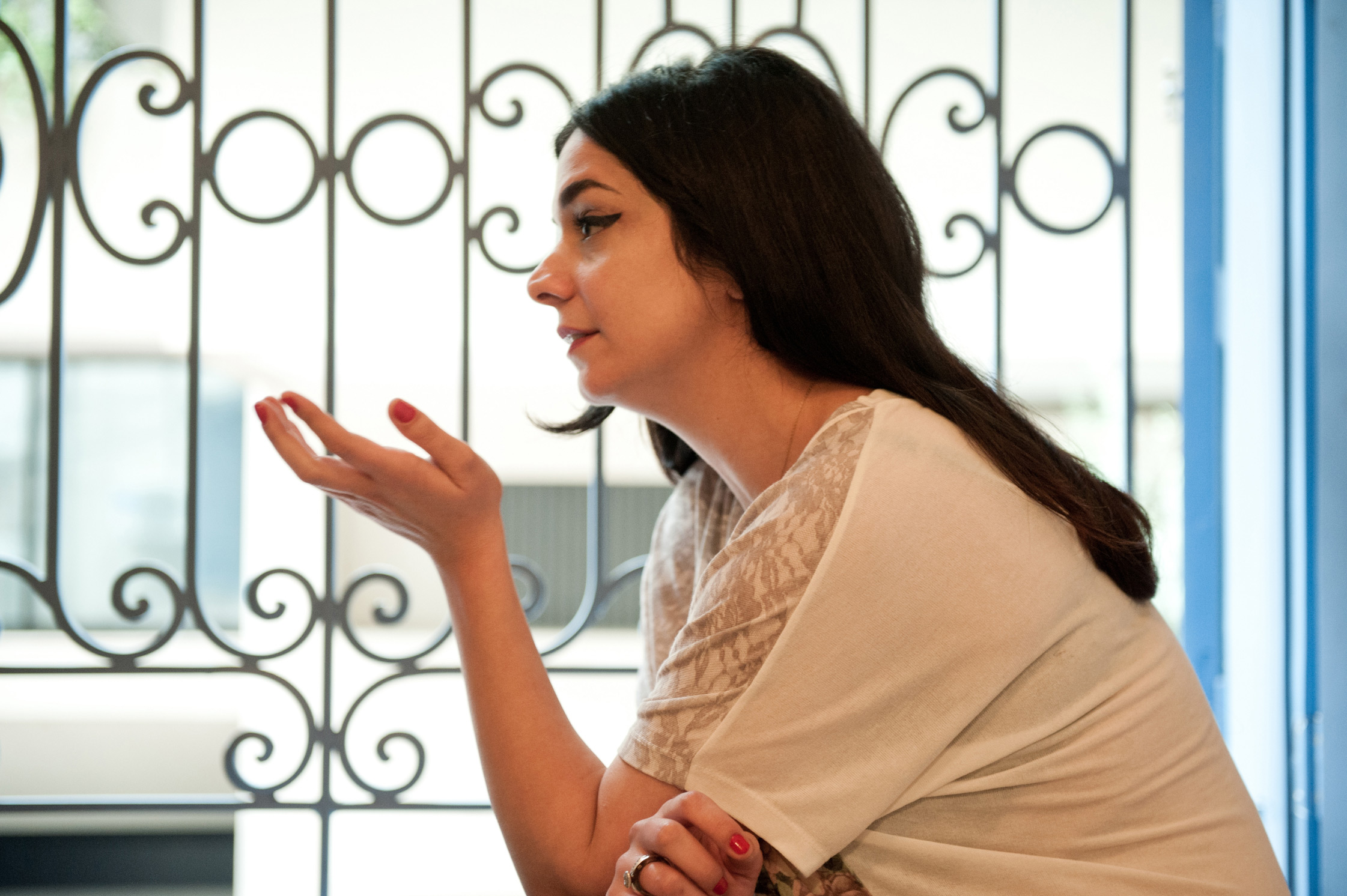
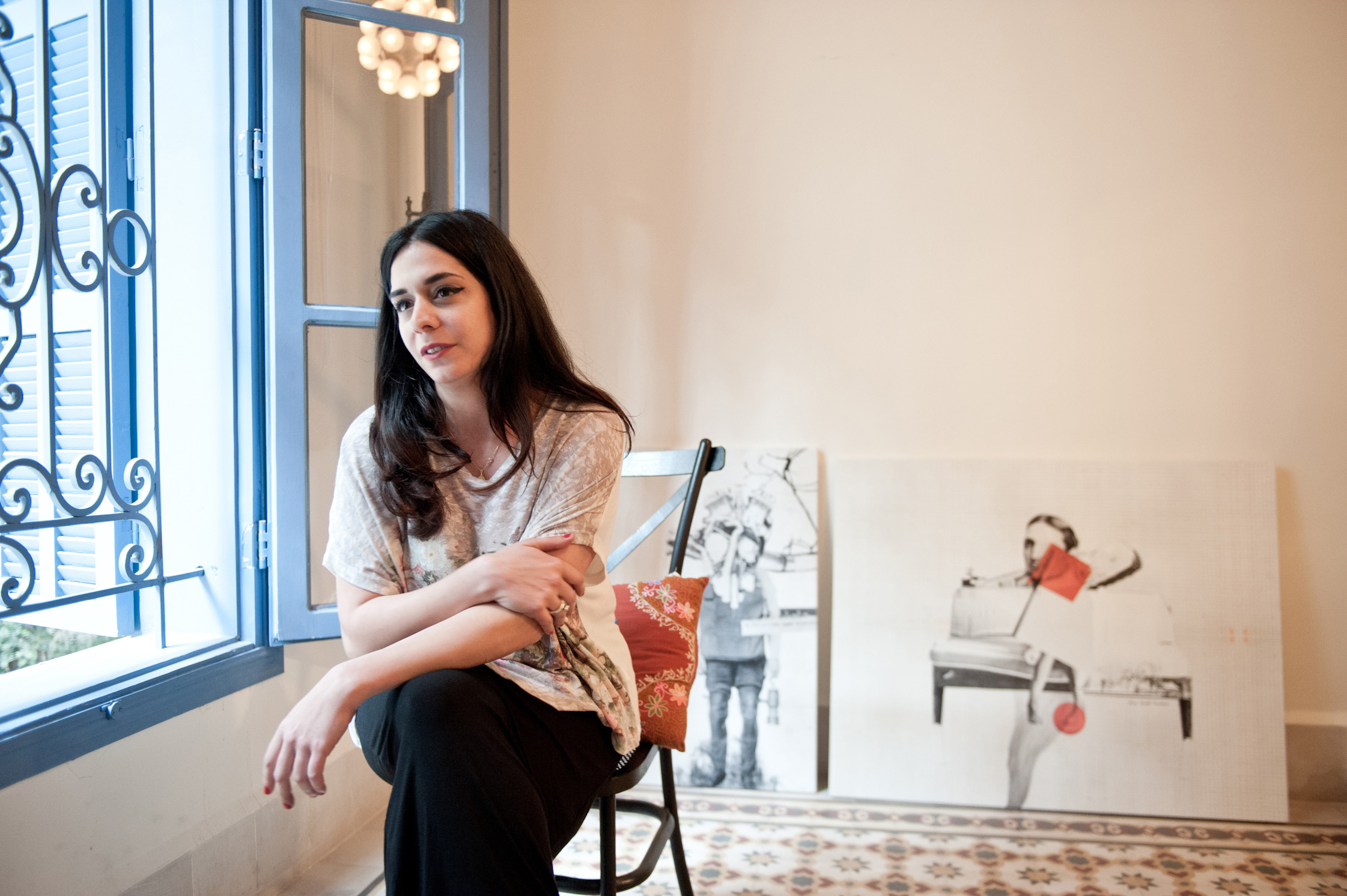
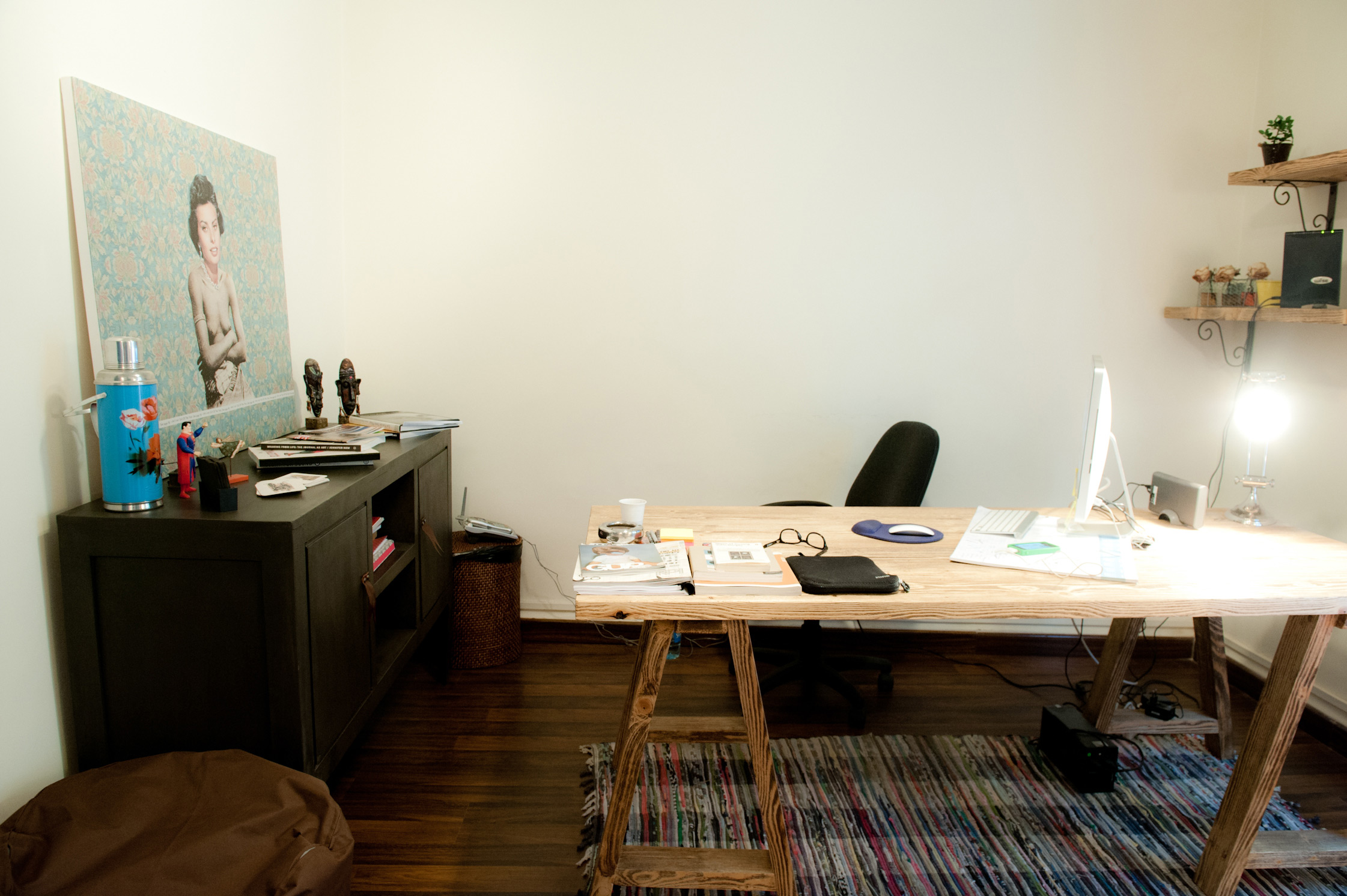
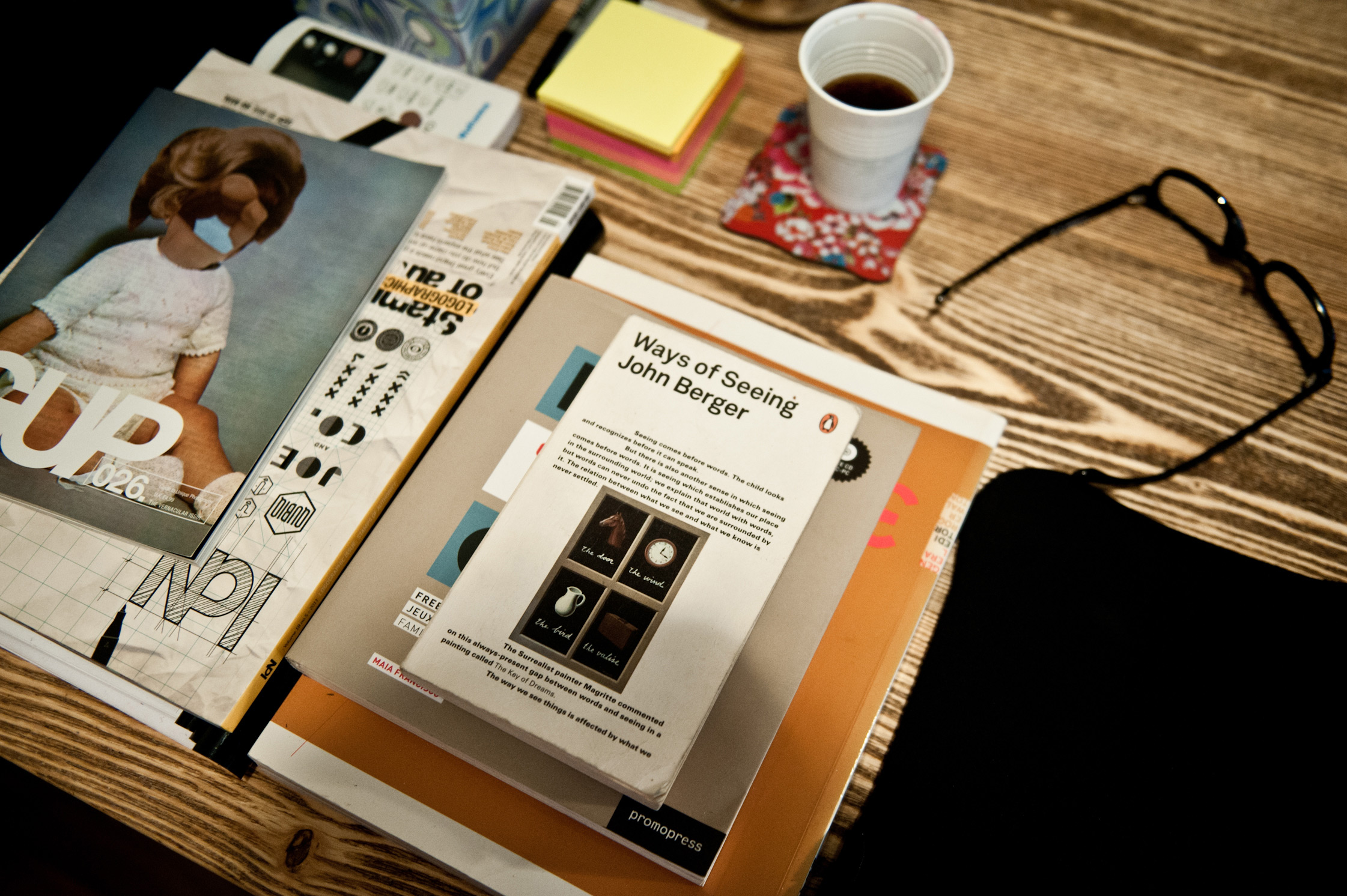
This is your first office by yourself. When did you move in?
A month and a half ago. I just felt like expanding in my field and I wanted to have more time to work on visual arts. I was working for a company before so I didn’t really have the time to work on my personal projects.
Where were you working before?
In a graphic design office.
What are you working on right now?
I’m working in my field mainly on corporate identities for restaurants etc. I also work on interior design, so basically I’ m more focused on print design – I also design interior and exterior wallpaper. Recently I collaborated with artists and musicians to design their CD artwork. And I have many other projects ahead.
When did you start designing wallpapers?
It’s been a while. I love wallpaper. I love the warm feeling it gives to walls and houses. But it also depends on the clients’ brief.
How does the office reflect you?
It’s very feminine. I love the old architecture, the old windows. I painted the doors and shutters in blue. It’s warm and welcoming and I also I love the area a lot – it’s in Gemmayzeh.
Do you get lonely in the office now that you’re on your own?
Sometimes! But being alone can be helpful, since you reflect a lot on yourself. However, at a later stage, I will be hosting workshops and as I stated before, I will try to create a space for those in need and elevate the space into another artistic dimension.
How much time do you spend in the office?
It depends. Sometimes I come early or leave late or vice versa.
Can you describe the area a little bit?
It’s very cosmopolitan. I love the fact that you can meet your friends in the coffee shop just under the atelier, do some reading, or even go for a simple walk down the road. There are a lot of interesting art spaces and galleries, too.
You’ve spent a lot of time in Montreal. Do you consider Lebanon your home now?
I don’t really consider Beirut my home, or anywhere else. I think you can find something you can connect to anywhere, any place in the world. Home is everywhere or it can be everywhere, if only man understood and all these boundaries could just vanish then home would be a safe place. However Beirut is very inspiring, but I loved living in Montreal as well.
How did living in Montreal inspire you as an artist?
I was really young when I lived there, from 10 years old to seventeen. I loved the multicultural atmosphere there. The openness and being able to meet people from different backgrounds.
Do you miss it?
I do miss it sometimes, of course. I miss the nature. Sitting in parks reading, listening to music, mingling with friends. I mostly miss jumping from our first floor balcony at night onto a small snowy hill and watching the snowfall – I remember that dark blue colored sky.
How does Beirut inspire you?
It inspires me a lot. Mostly it’s the people, of course. And politics. All the emerging buildings – the electrical poles – etc.. Sometimes you get a kind of a suffocation in this country, which comes out a lot through your work.
Is there a political message in your work?
Yes there this. I’m concerned a lot with injustice and oppression. There’s a lack of freedom of speech and freedom of opinion, even in the art field. Recently a friend of mine, who is an artist, did a graffiti on a wall in Beirut and had to go on trial. This is what I’m trying to portray. I also talk a lot about women in our society. Whether it’s about poverty or refugees, I try to elevate my characters in my collages into something more important using an iconic kind of visual.
Can you describe your technique?
Mostly I work with digital and handmade collages. I draw, scan, and overlap. There’s no timing. Sometimes I stop and then work on it the next day. Sometimes it takes me two or three hours and even more. It depends on the emotional burst.
You use a lot of surrealist imagery. Where do you start from in a composition?
I don’t have one starting point. It just comes out randomly. I don’t sit and say, “This is what I’m going to put now”. I have the idea but the rest just floats like music. I always work when I’m listening to music. It just comes out like a burst. It flows.
Where do you source your images?
Sometimes I take them from books or magazines. I use old photographs, which I combine with my own graphics and illustrations. Sometimes I take my own photography, as well.
What music do you listen to?
Mostly ambient, electronic, post-rock. I love M83, Efterklang, Gimmik, swod. I also love Icelandic music such as Skuli Sverisson and Sigur Rós and many others.
You recently started singing too?
Once there was a concert to raise funds for children with cancer. My friend Liliane Chlela is a music composer and she told me to sing at the event. Since then I’ve been collaborating with her, Munma and C-drik, who lives in Berlin, on a few tracks. It’s fun. I’ve never sung before! They used my voice as an instrument. I wrote the lyrics. Each track just has a few lines – it’s mainly electronic music with noise.
Are there any bands you’d like to design for?
M83! Actually I did something for their latest album but it was just a personal interpretation while I was listening to their music. I didn’t send it to them.
What do you think are the advantages of being an artist in Beirut?
The positive thing is that it’s a very small country. People can hear about you. People are encouraging. There are a lot of intellectuals who have been all around the world so it’s very open. The scene is expanding.
How would you describe the art scene here?
It’s very good, whether it’s music, art, painting or fashion. There’s a boom in the arts right now because we’ve been oppressed the past few years. There are a lot of things going on and what’s really interesting is the amount of collaborations. I have an upcoming collaboration that I’m working on with a painter and a poet. Collaborations are really important I think – the chance to work with people from different backgrounds can awaken a lot of emotions and ideas for the self.
How do you manage the relationship between your commercial work and your personal work?
Now my clients know who they are working with. So it won’t be very commercial. There will be some kind of twist and a chance to incorporate new visual elements in the market. Most clients here are really scared of new things and seeing new visuals. Sometimes they’ll ask me to imitate something they’ve seen before! I try to propose new ideas. I’m quite flexible so we try to find solutions between both.
Your images bounce between humor and darkness. Is that what’s happening in your head?
Yes. I mean we all have a dark and a lighter side in us. It’s an emotional translation poured in different mediums. I still do illustrations. But now I’m more focused on collages. I take old photos and putting them in another context, giving them a new dimension. It’s like directing your characters. Sometimes you can have a deconstructed body of someone combined with something esle… I love this surreal, illogical imagery, that we are becoming ourselves.
Favourite artists?
I love Man Ray. Dora Maar. László Moholy-Nagy, Max Ernst… a lot of artists.
Do you have an artwork you’re most proud of?
There’s a piece I love. I have it as my desktop background actually. It’s a girl elevating herself with two astronauts on each side. It’s an image of the crucifix, kind of, but in another context. I have a love/hate relationship with everything related to science. I made it when I was very moved by the atrocities going on. I think a lot about the human condition and how we destroy things through war or technology. Whatever science should be used to help to discover and not as a destruction tool.
Thank you Maria for giving us a peek into your new office. See some more of the world of Maria Kassab on her website.
This portrait is part of our ongoing collaboration with ZEIT Onlinewho presents a special curation of our pictures on their site. Have a look here!
Interview & Text: NJ Stallard
Photography: Tanya Traboulsi
